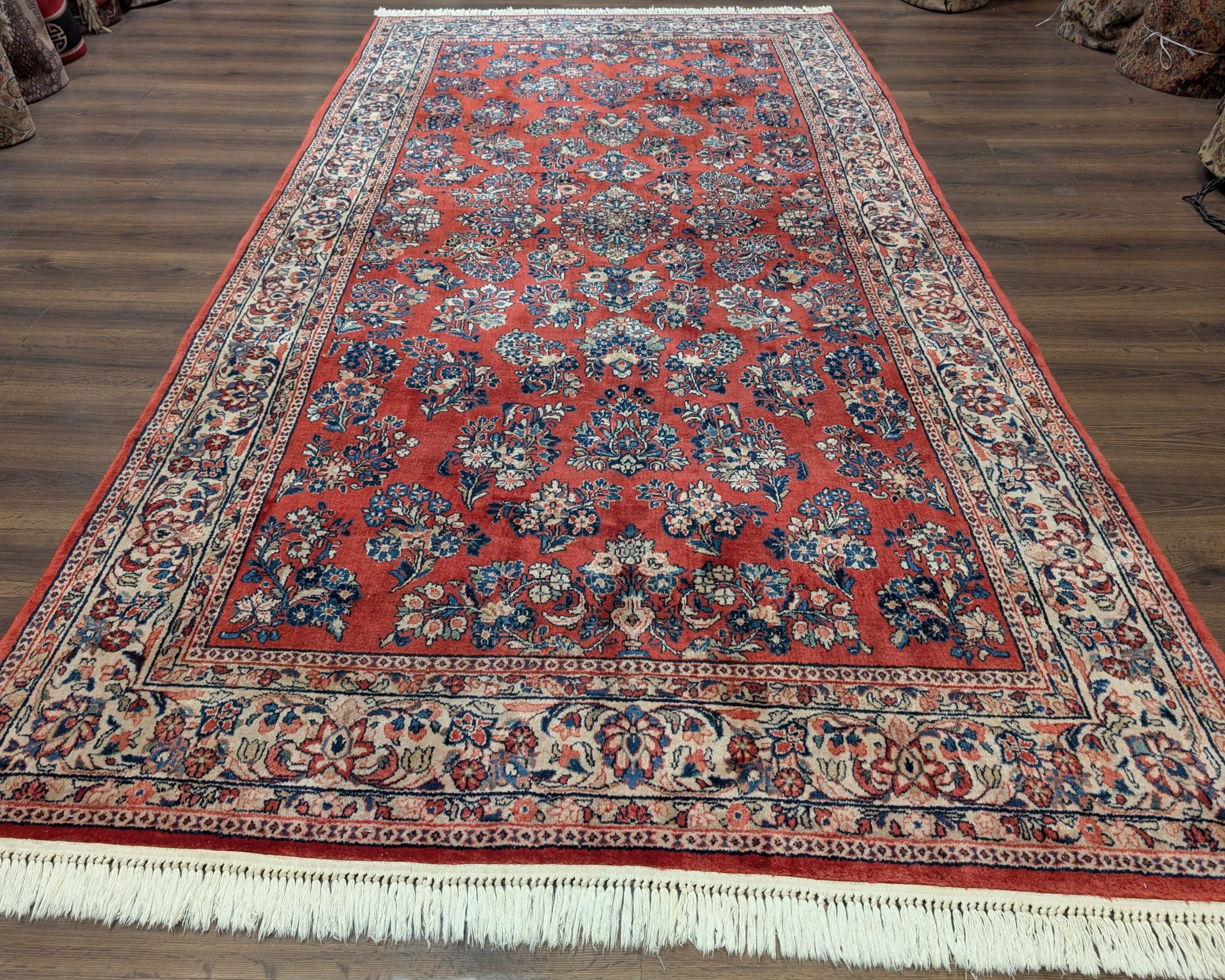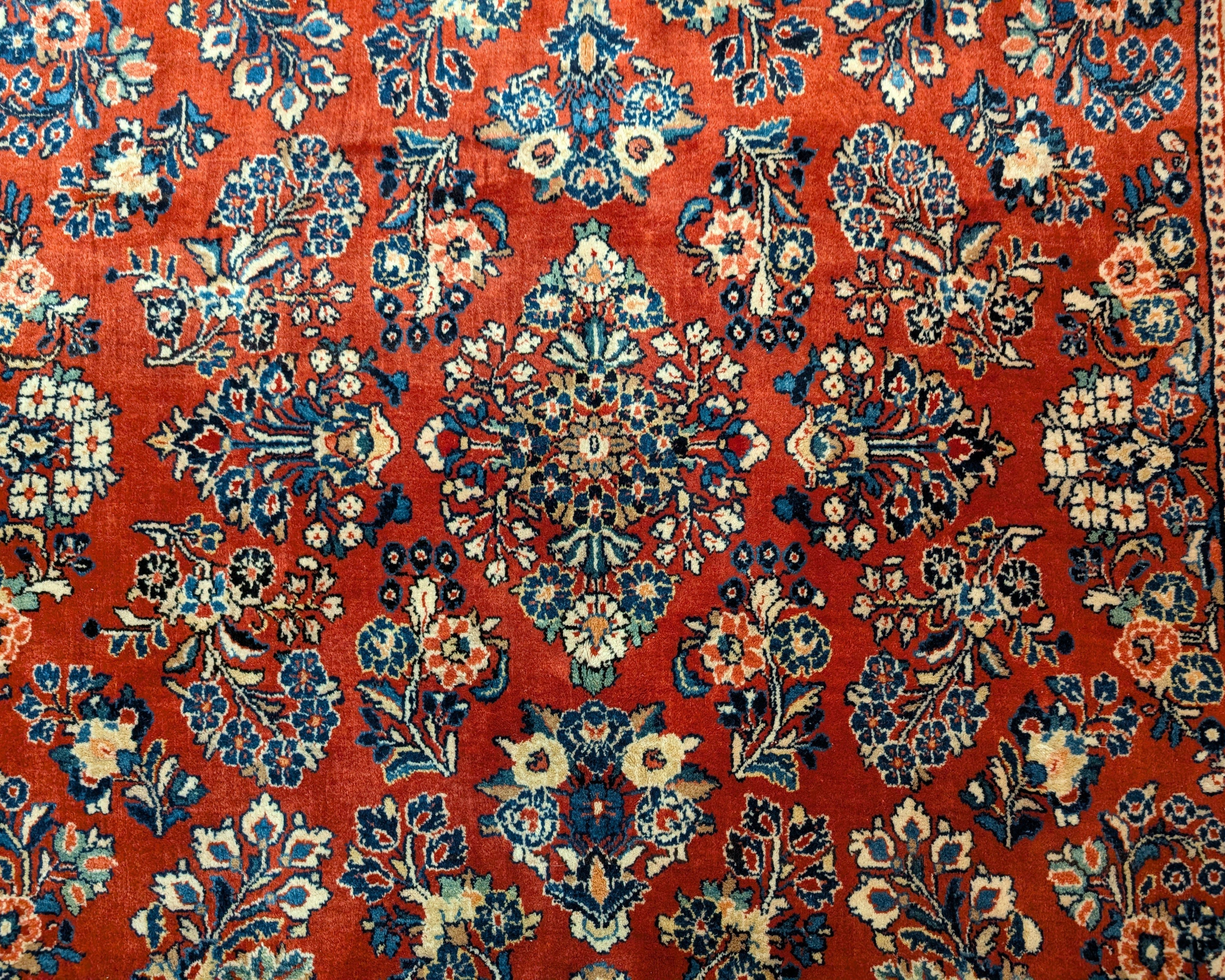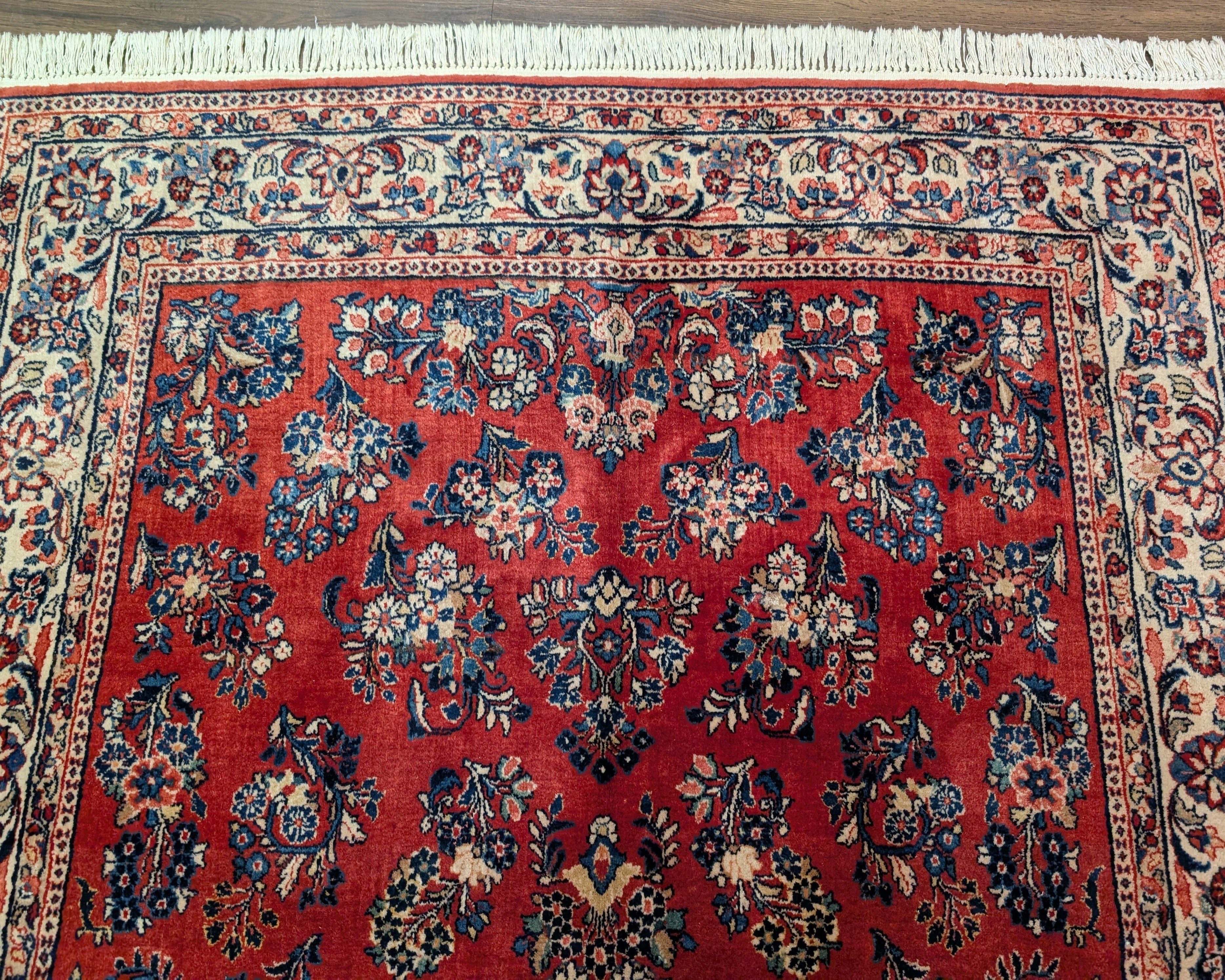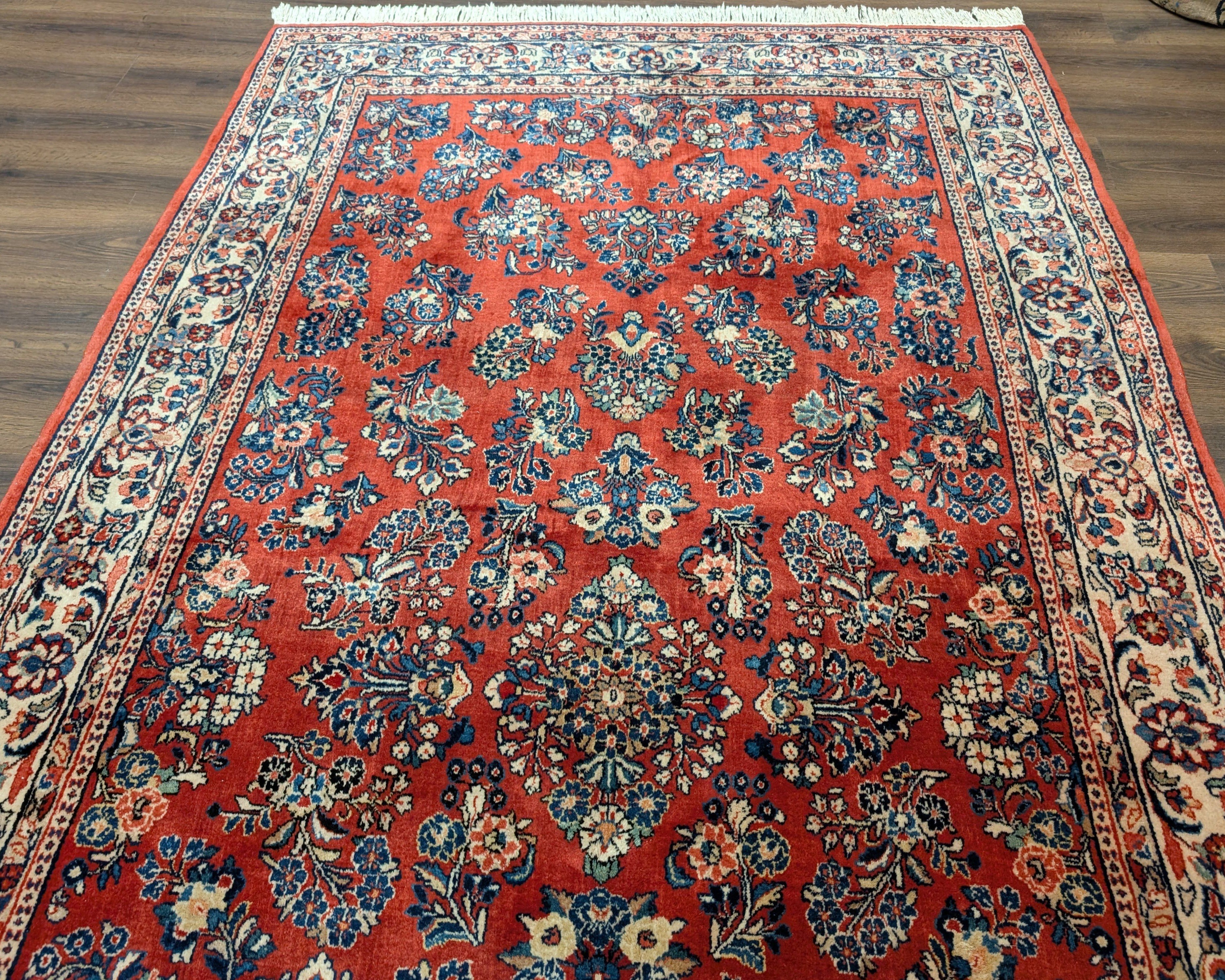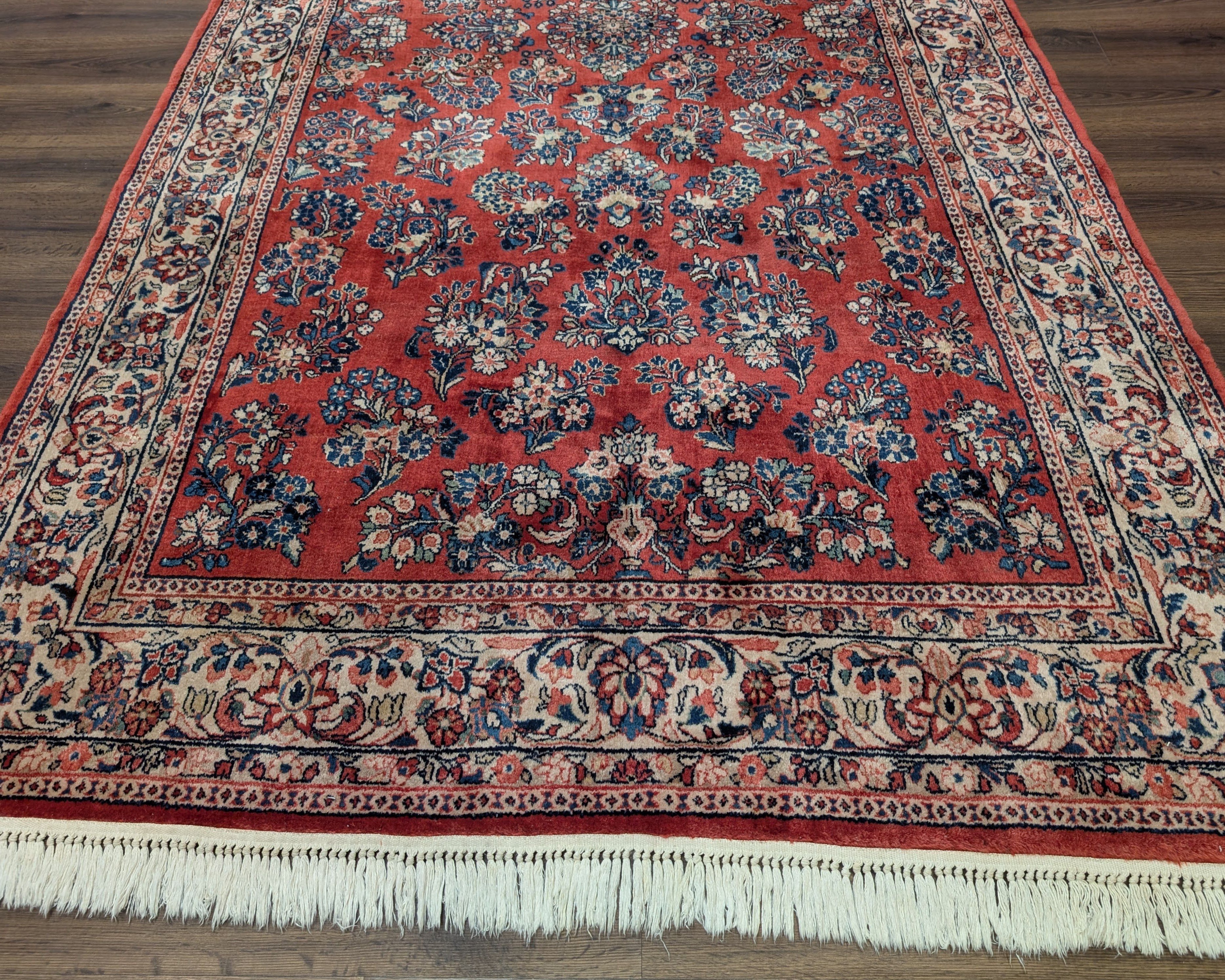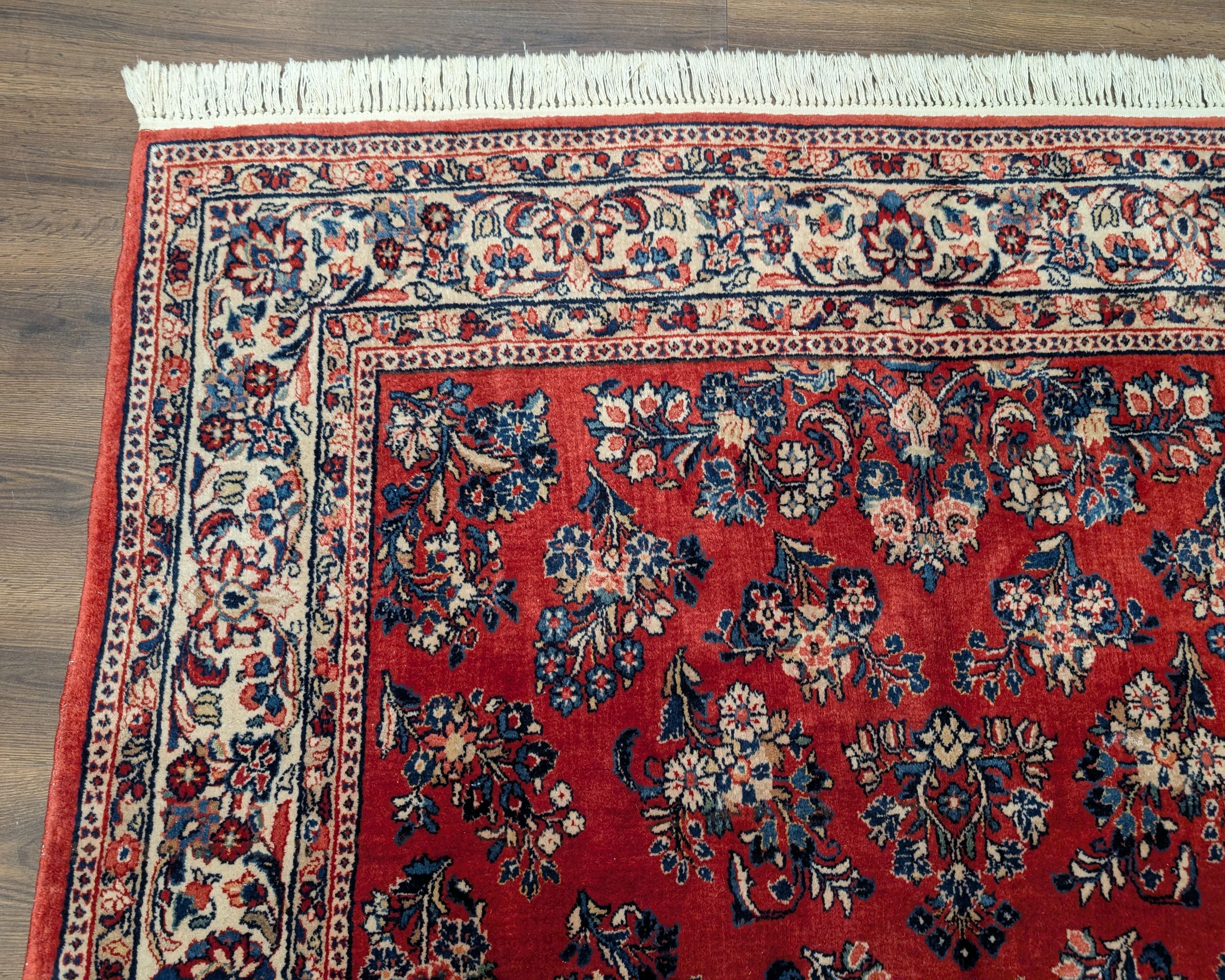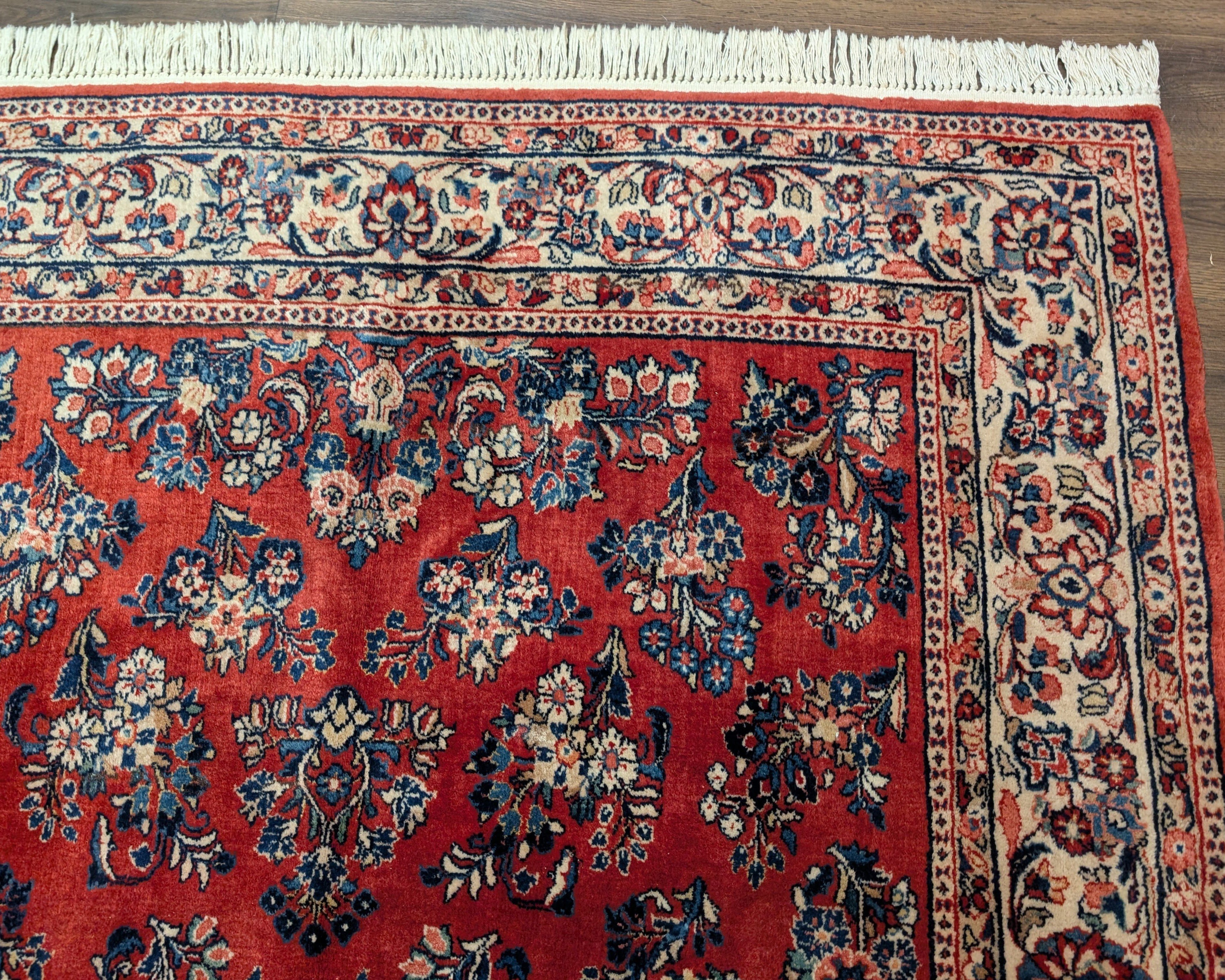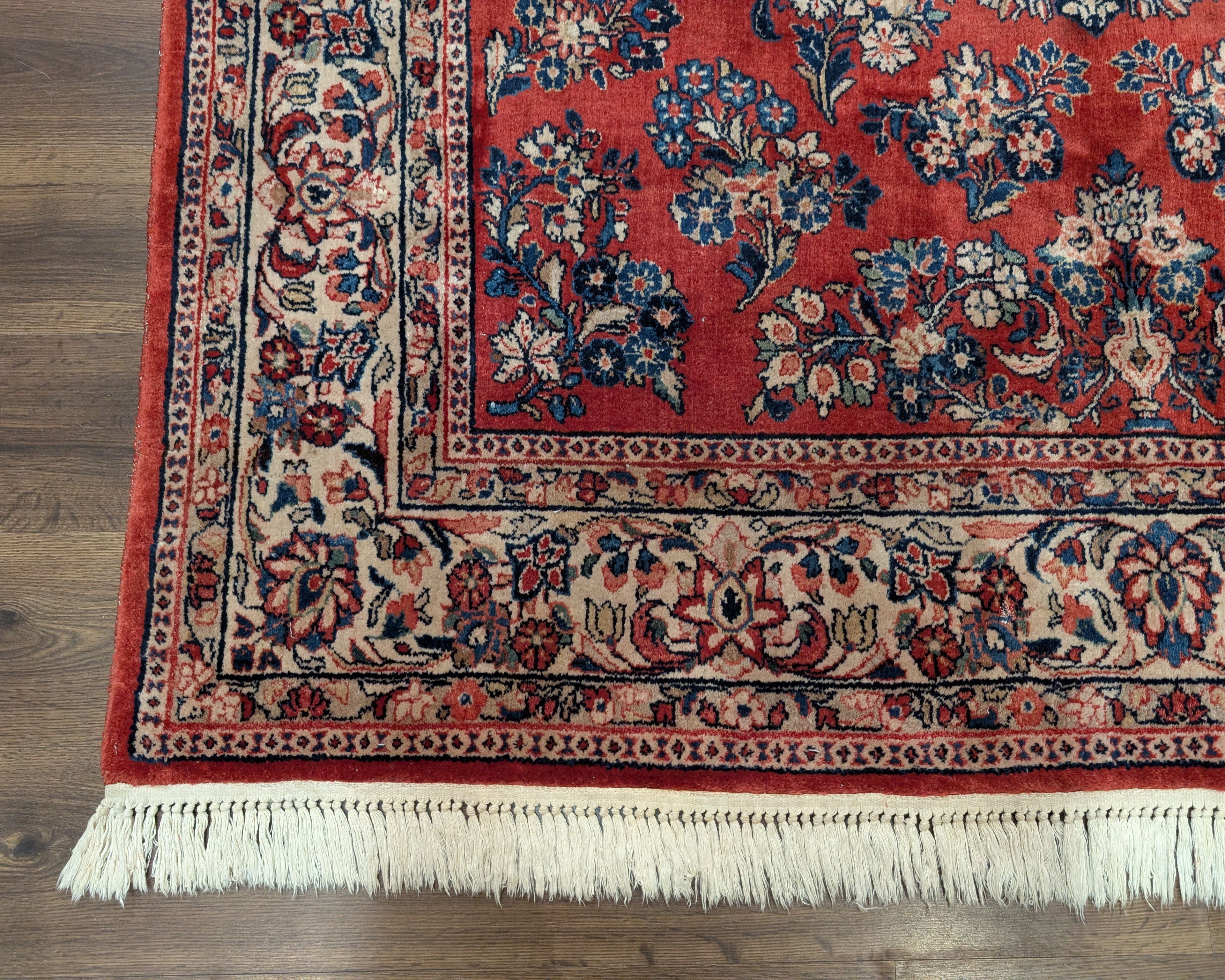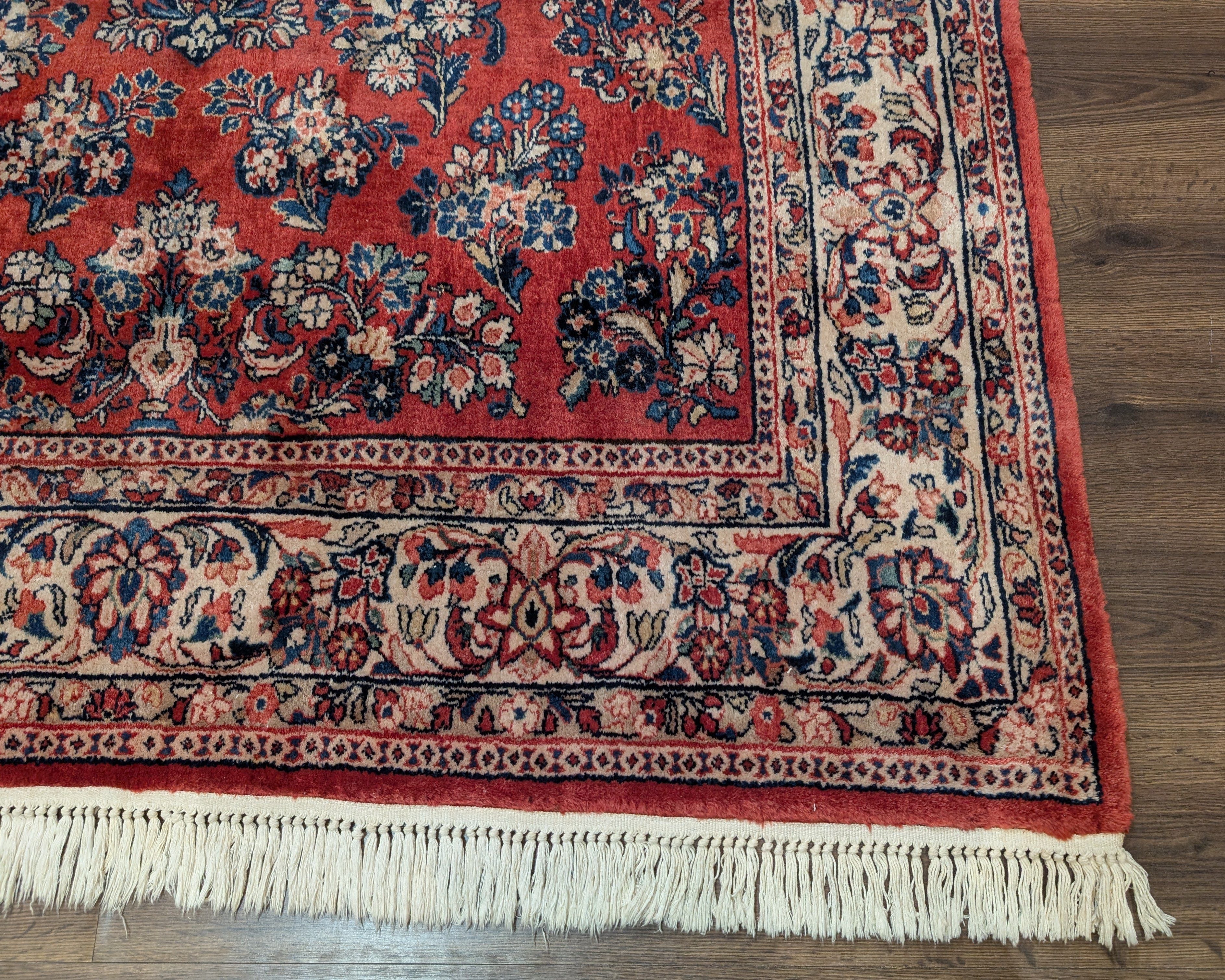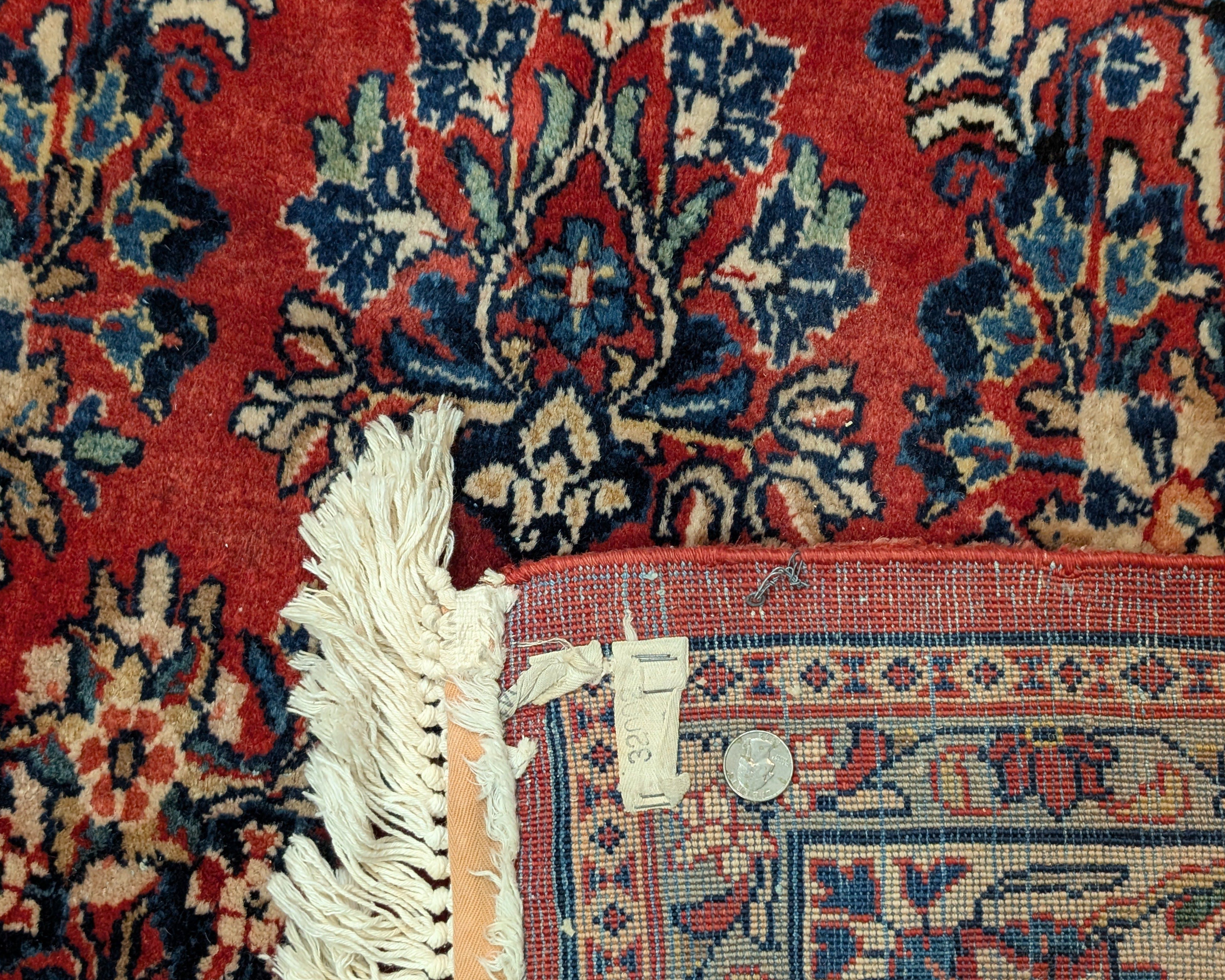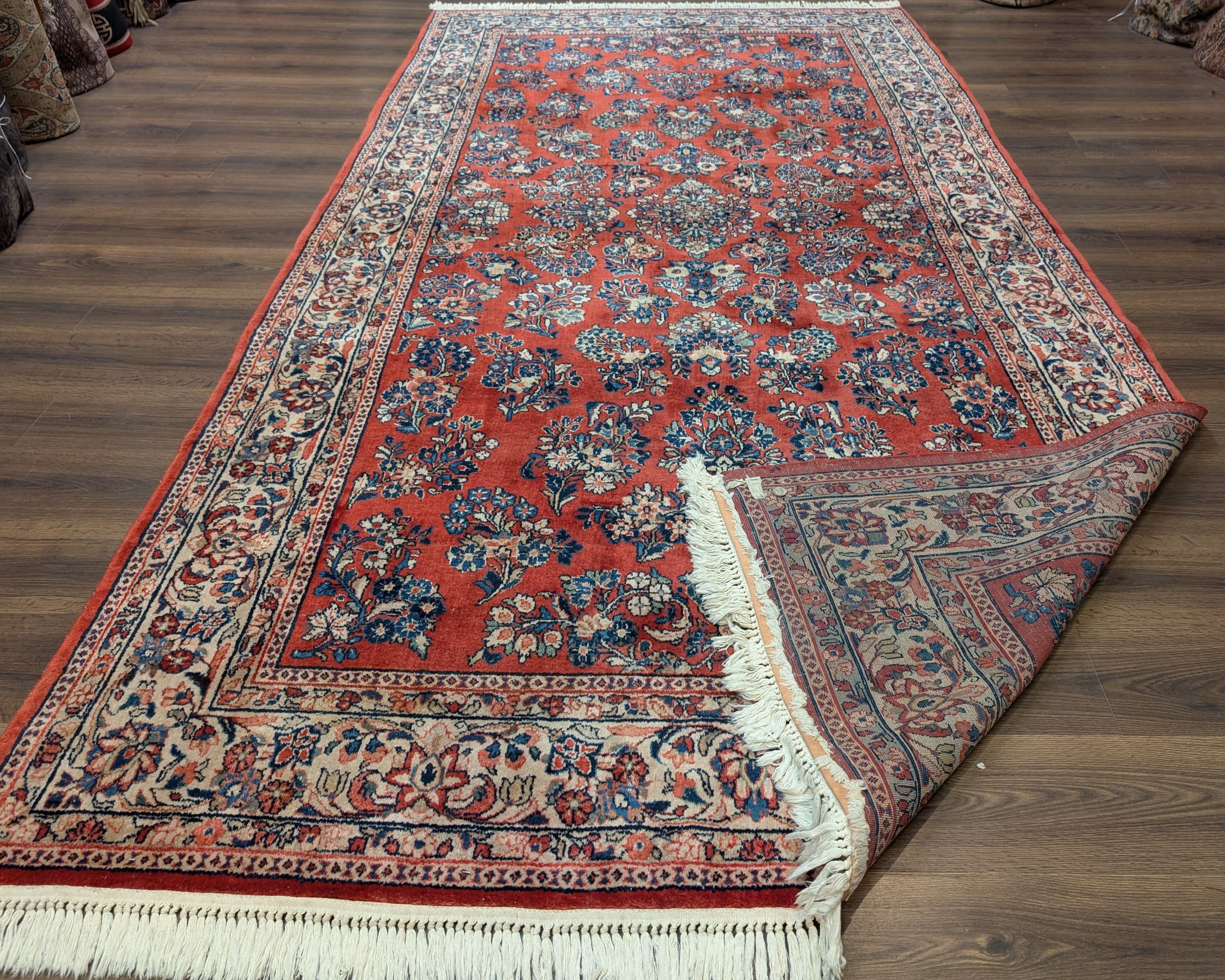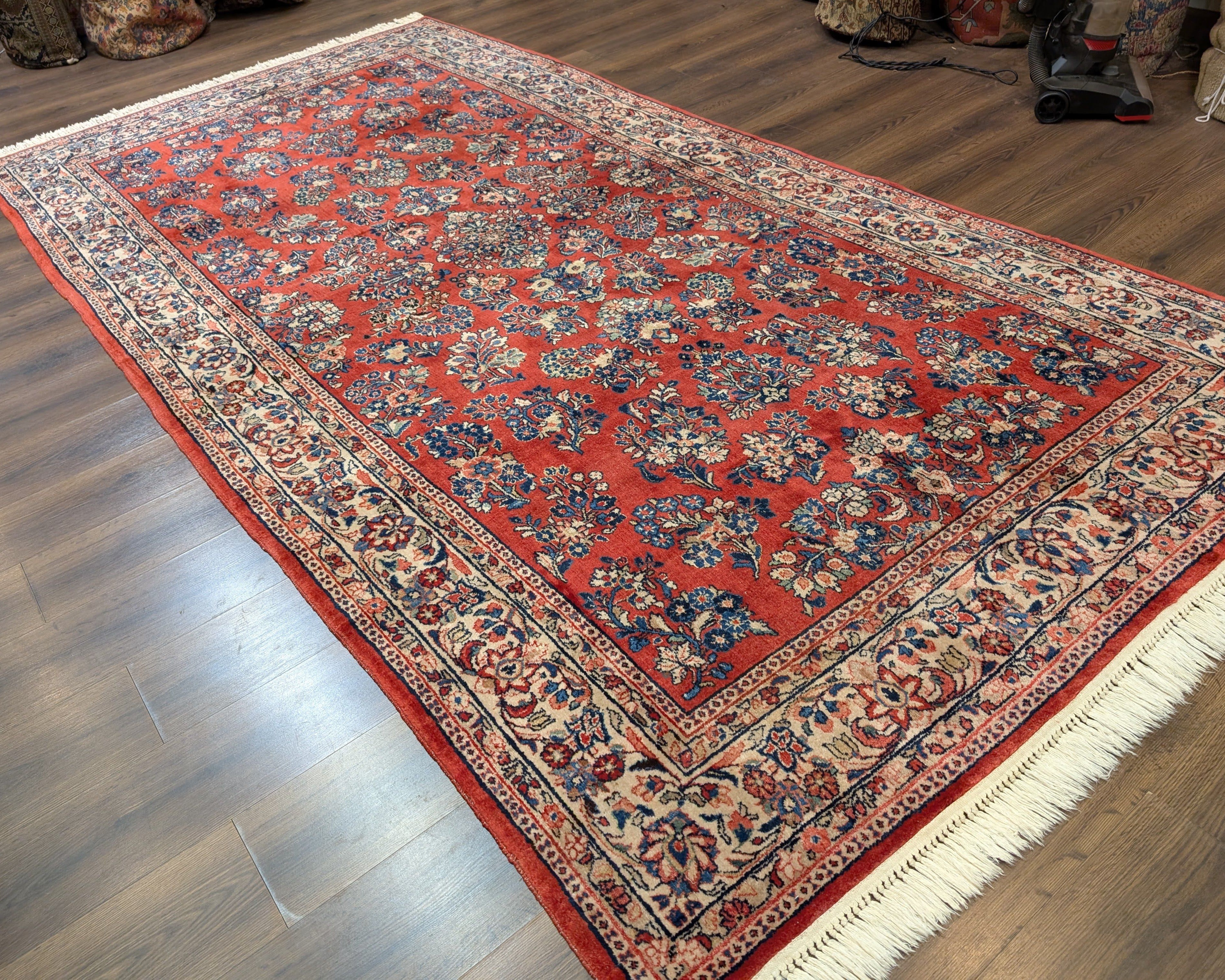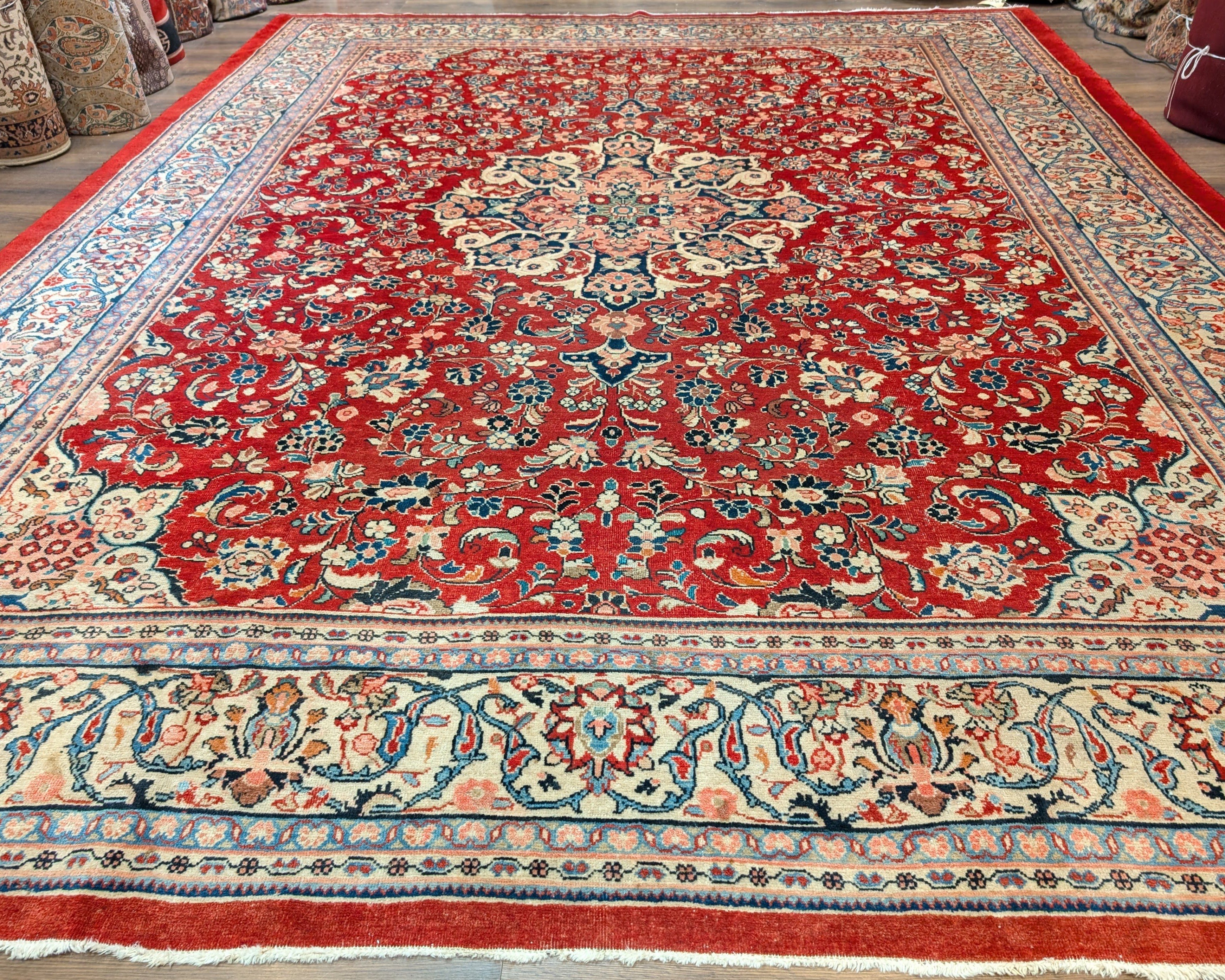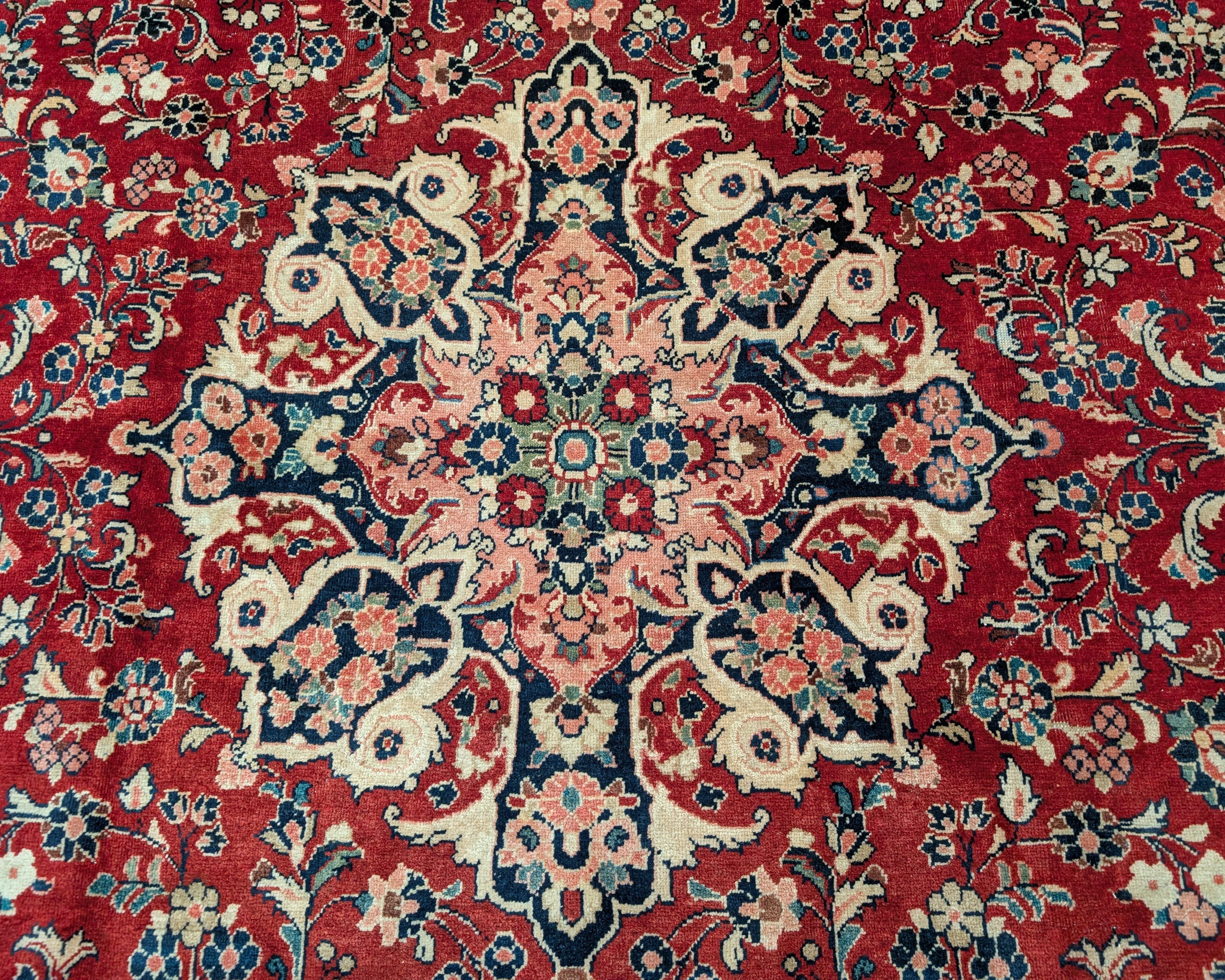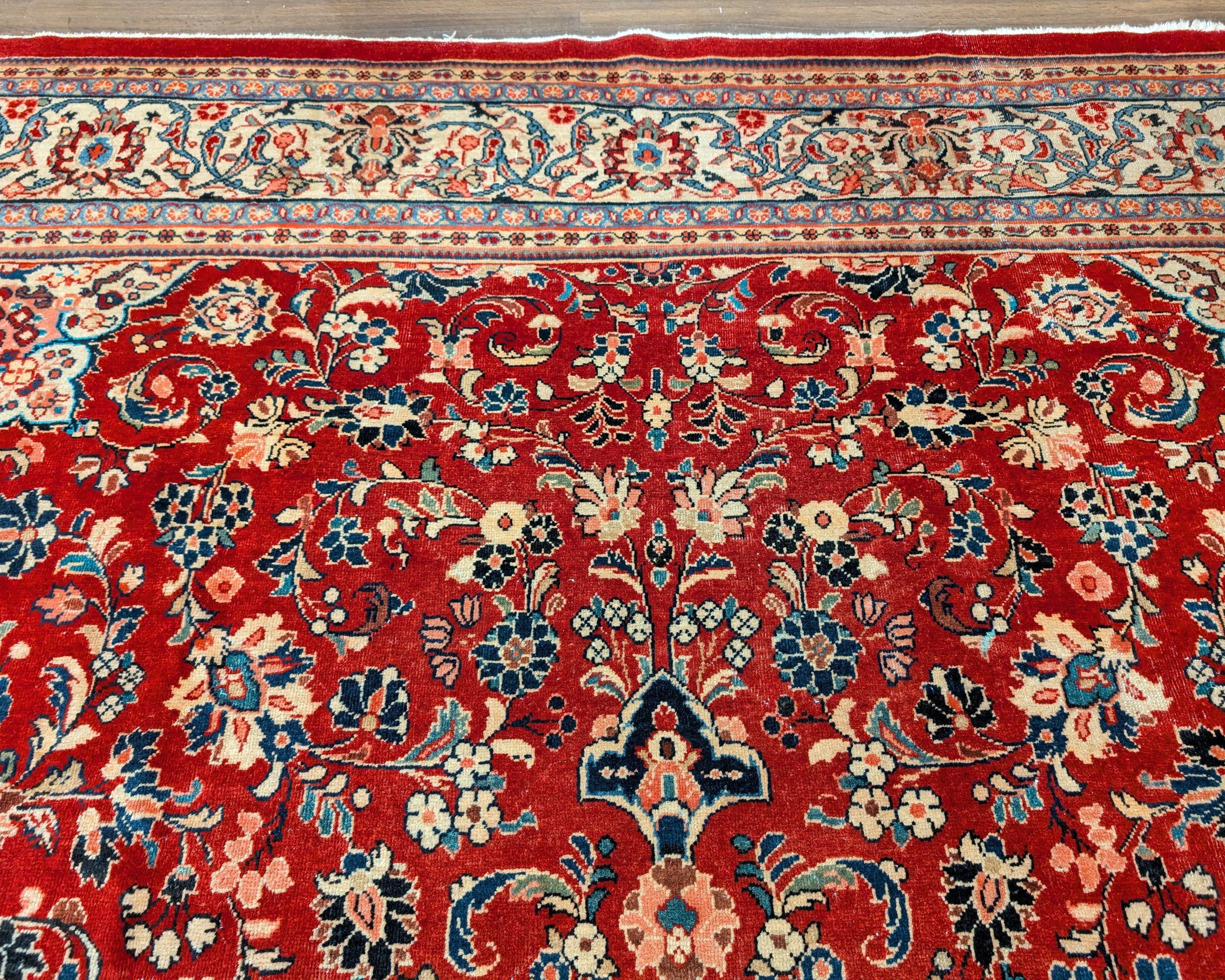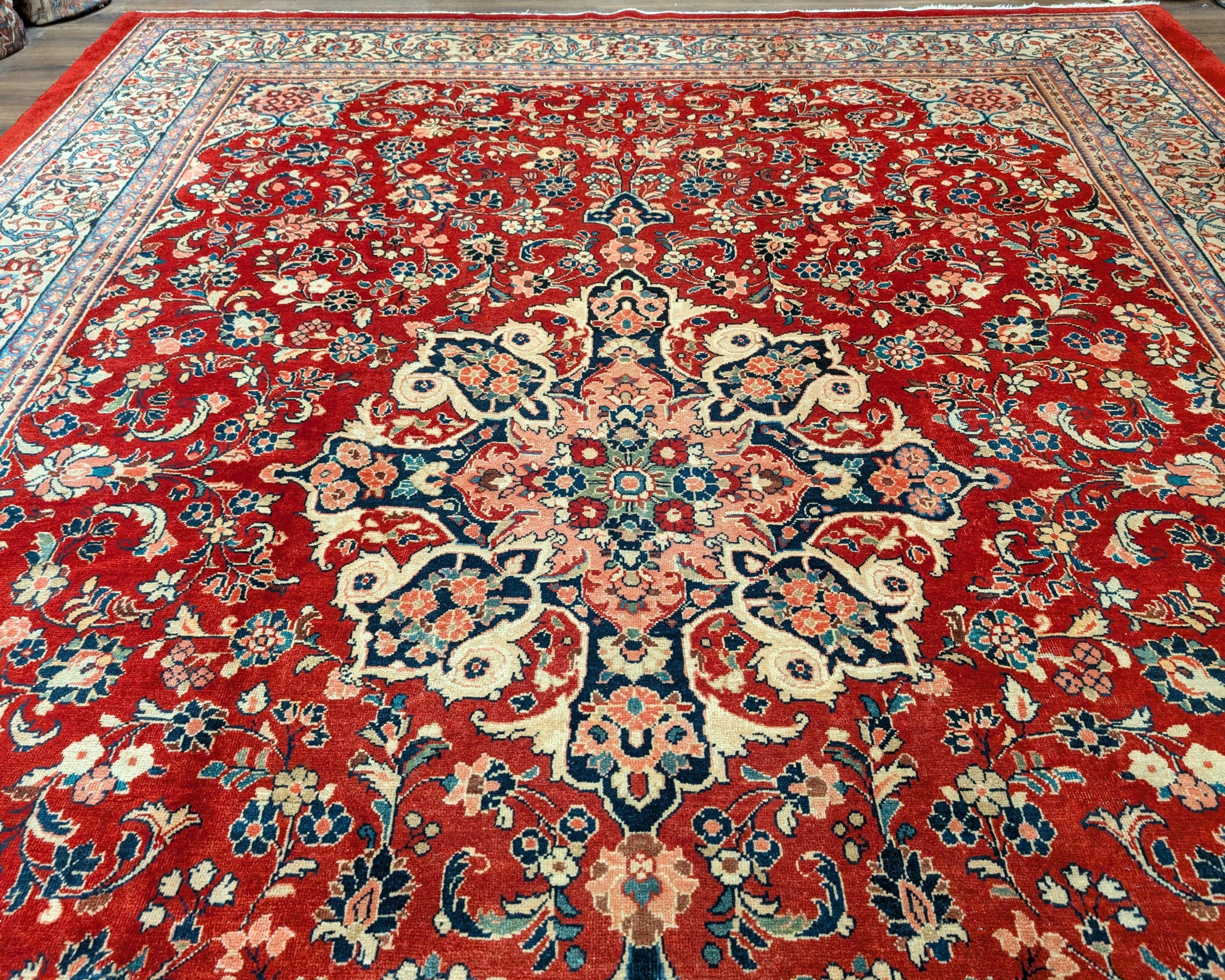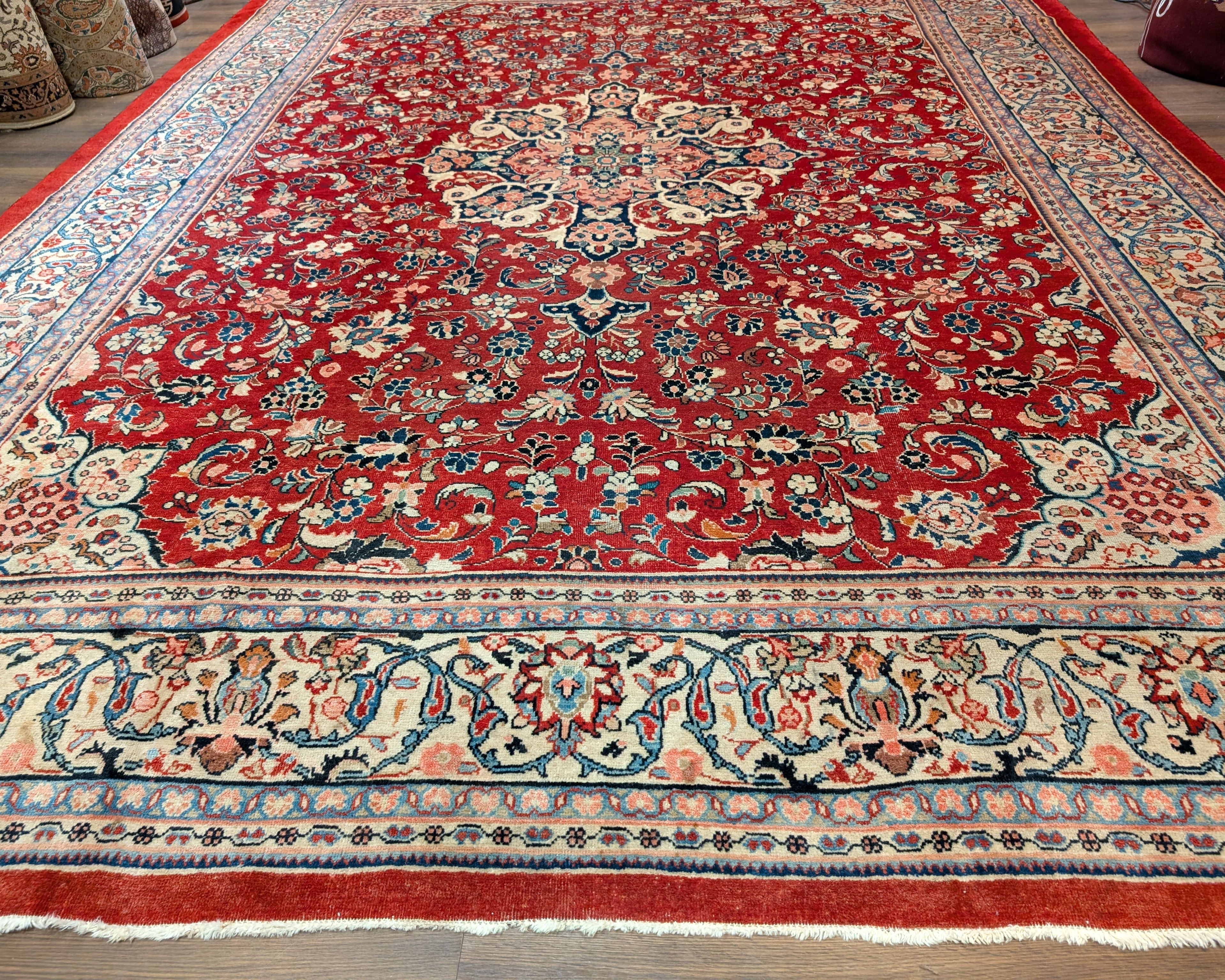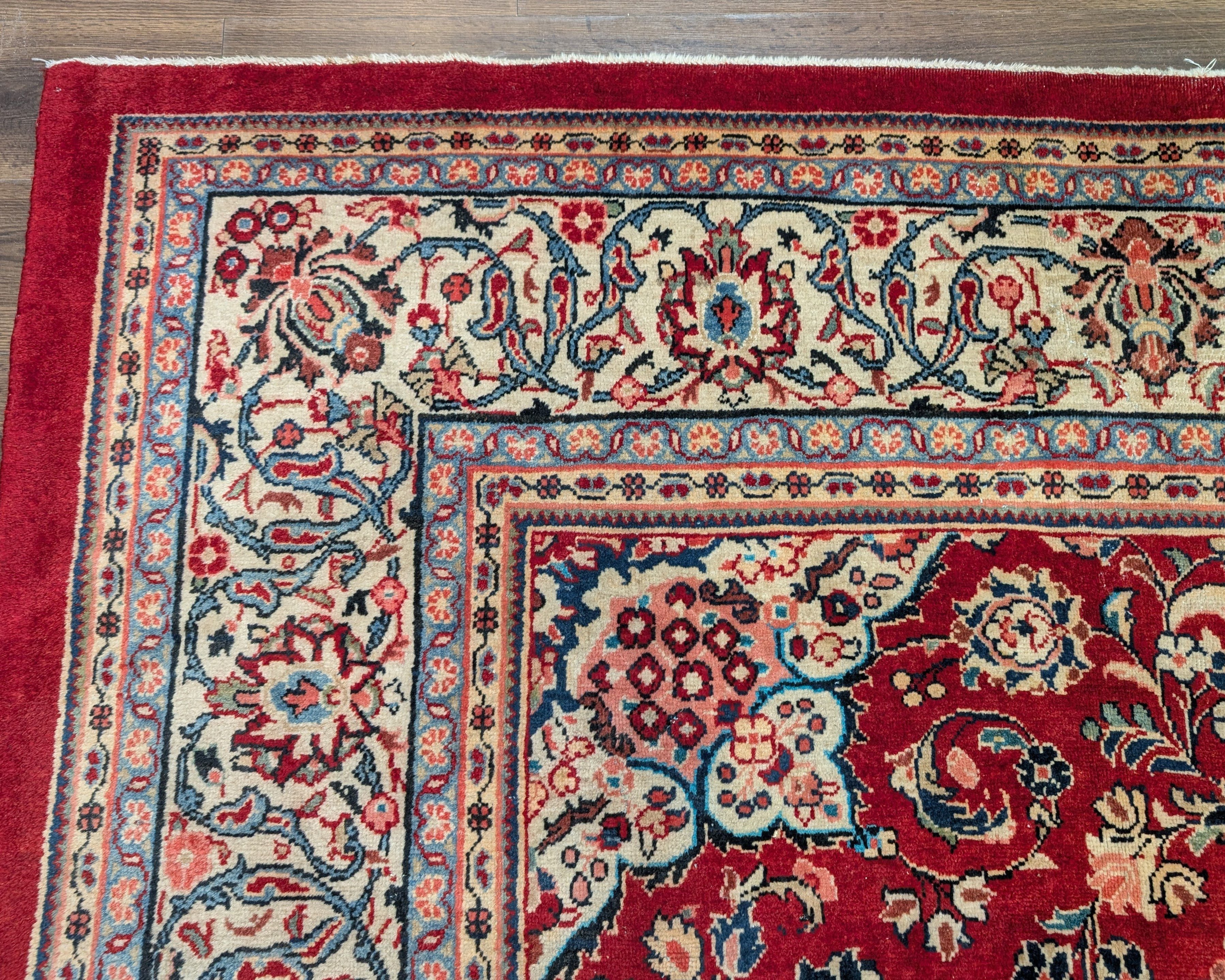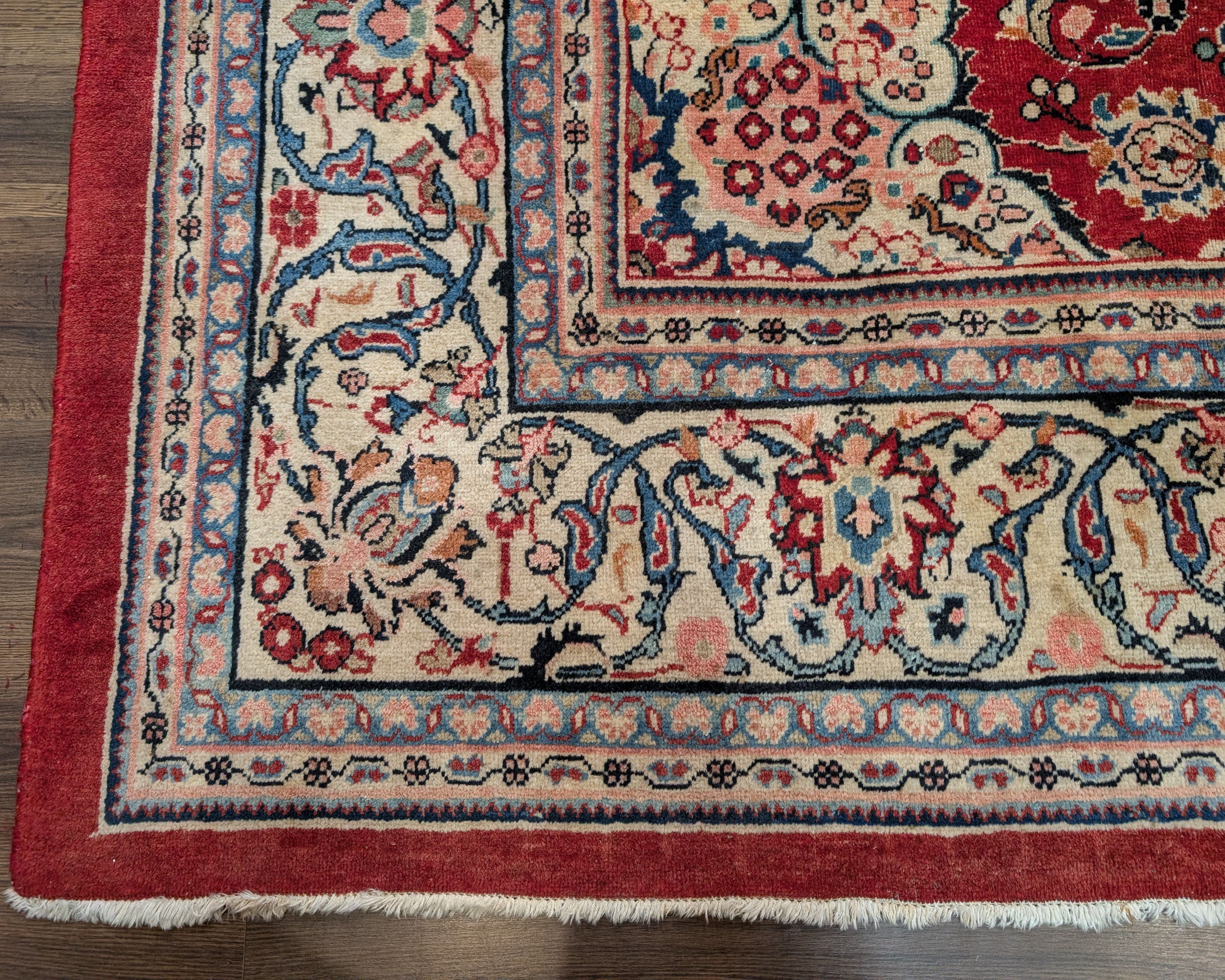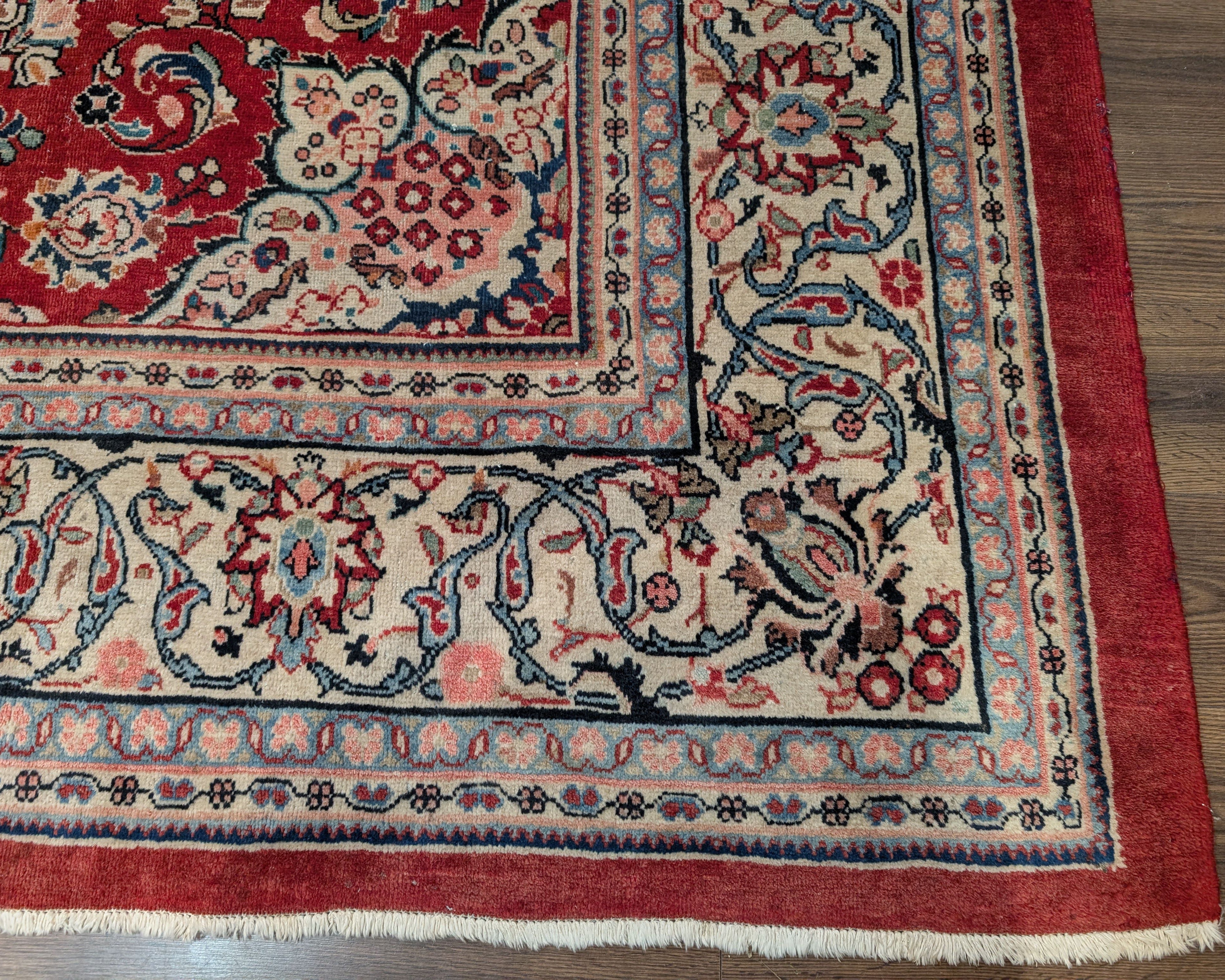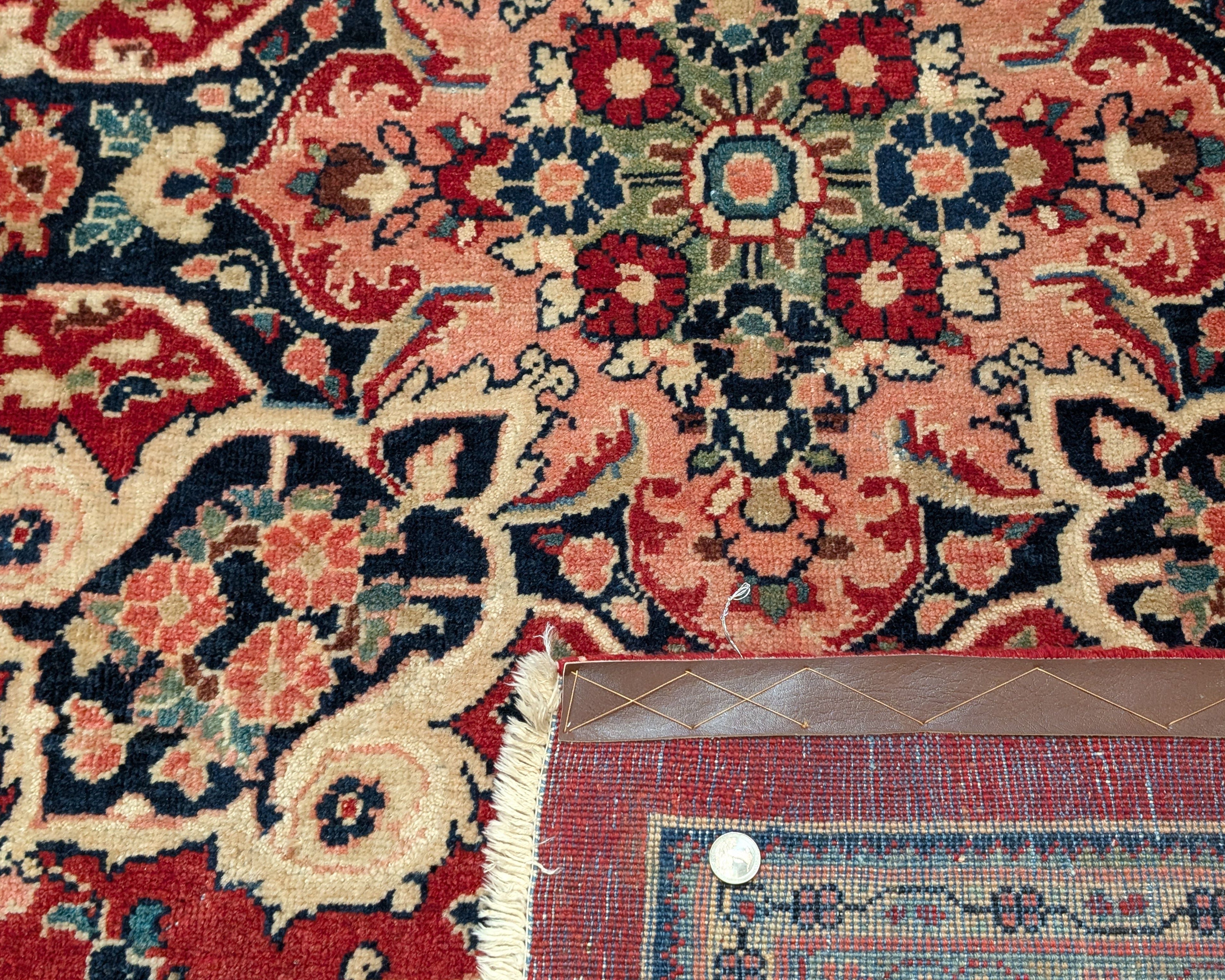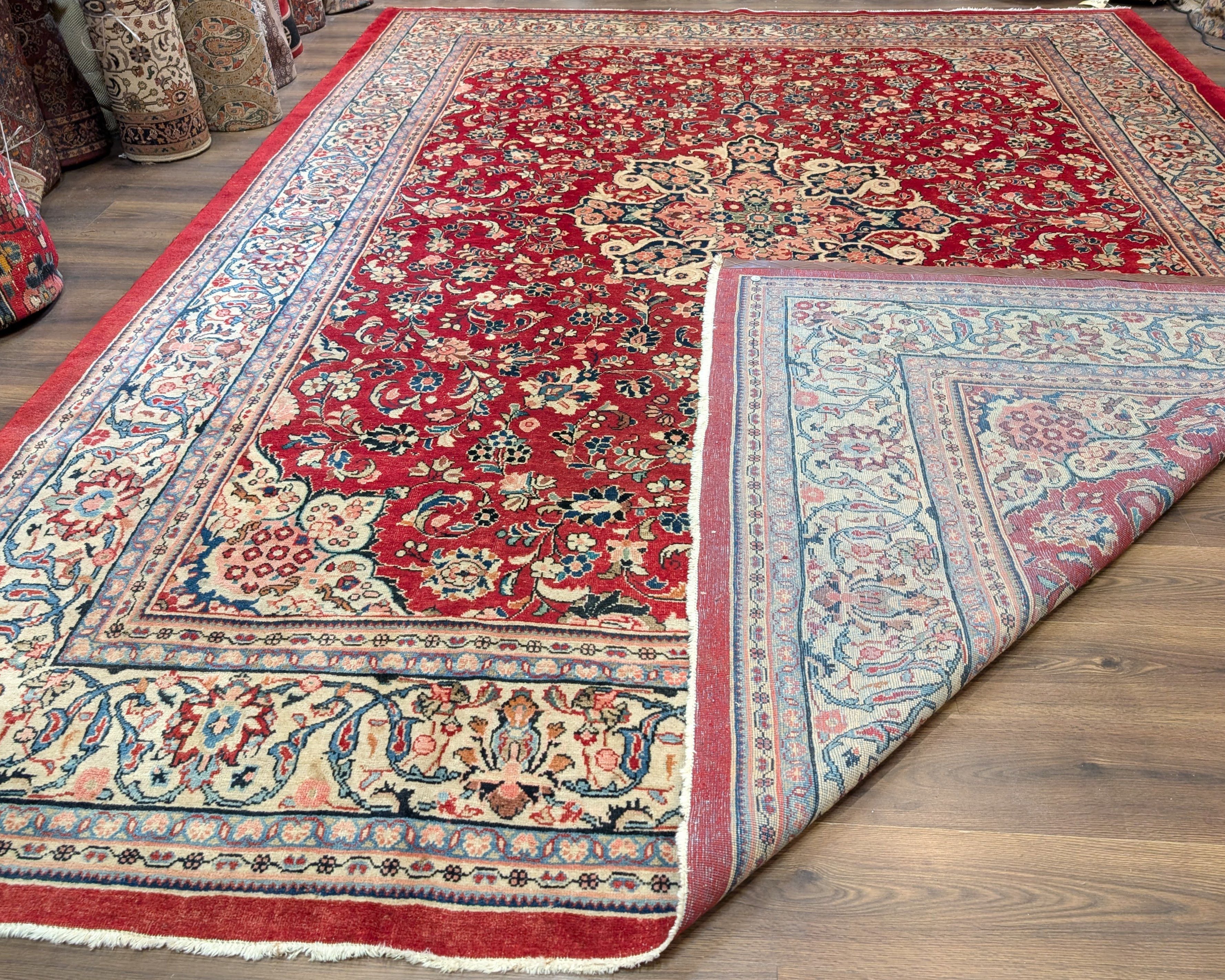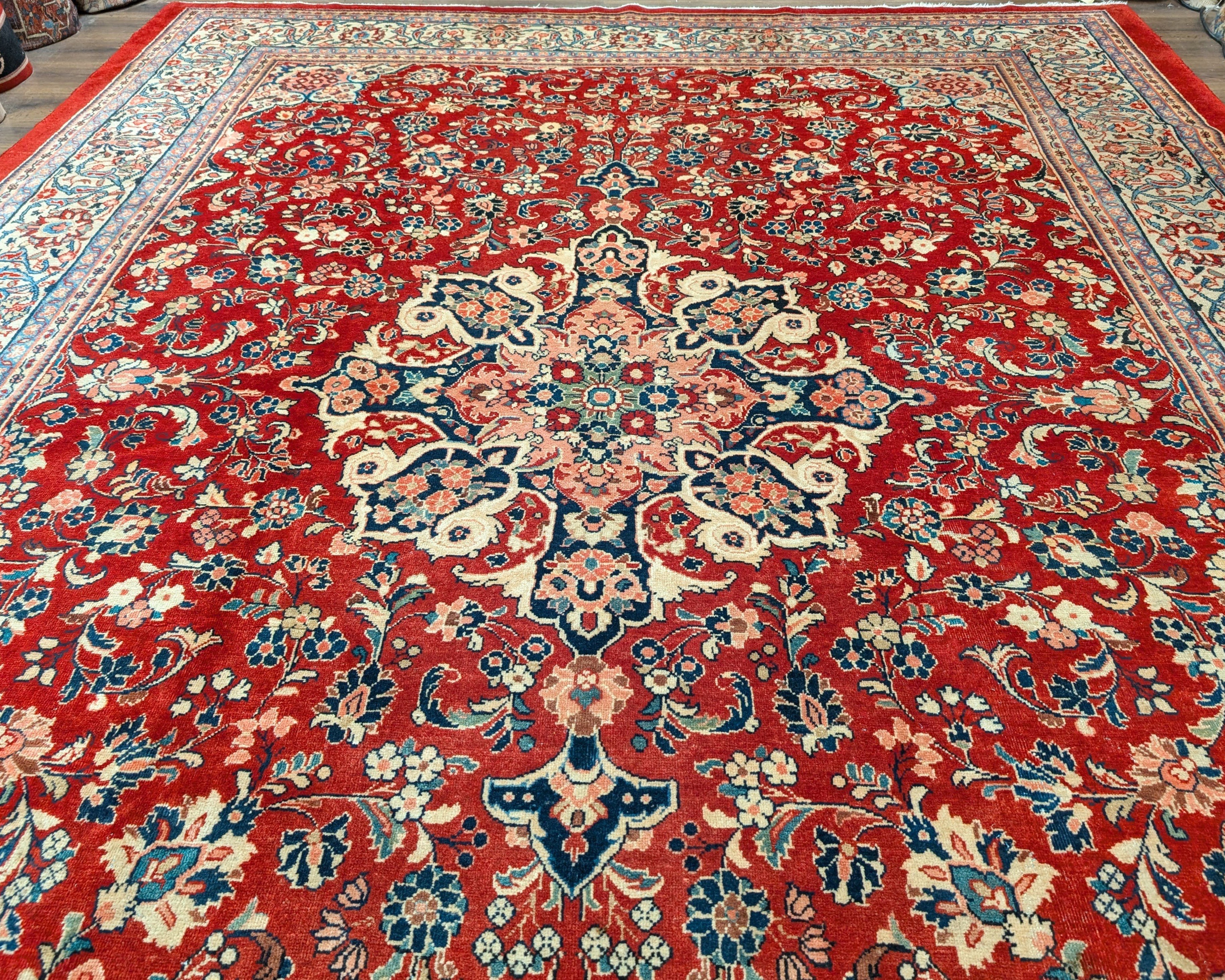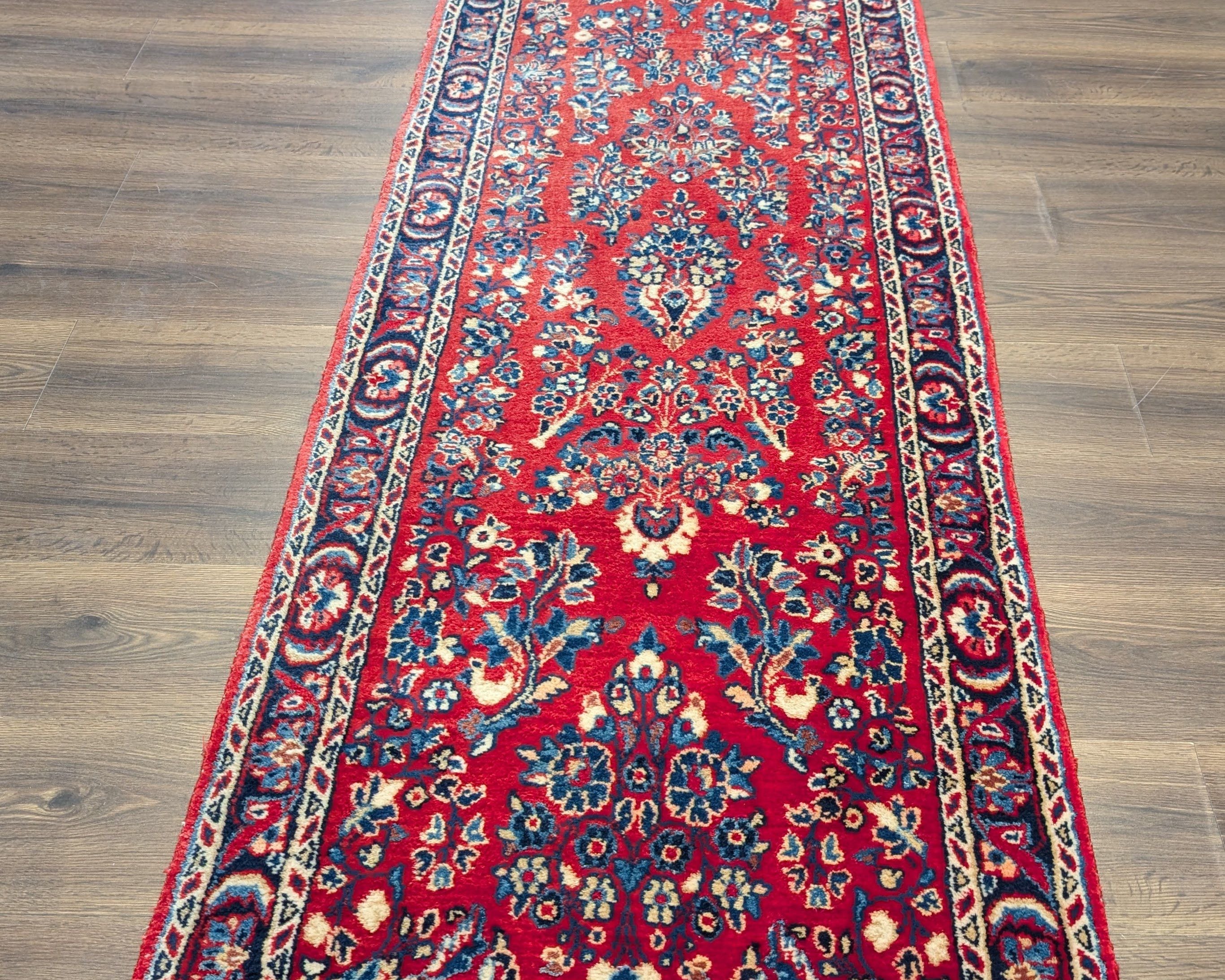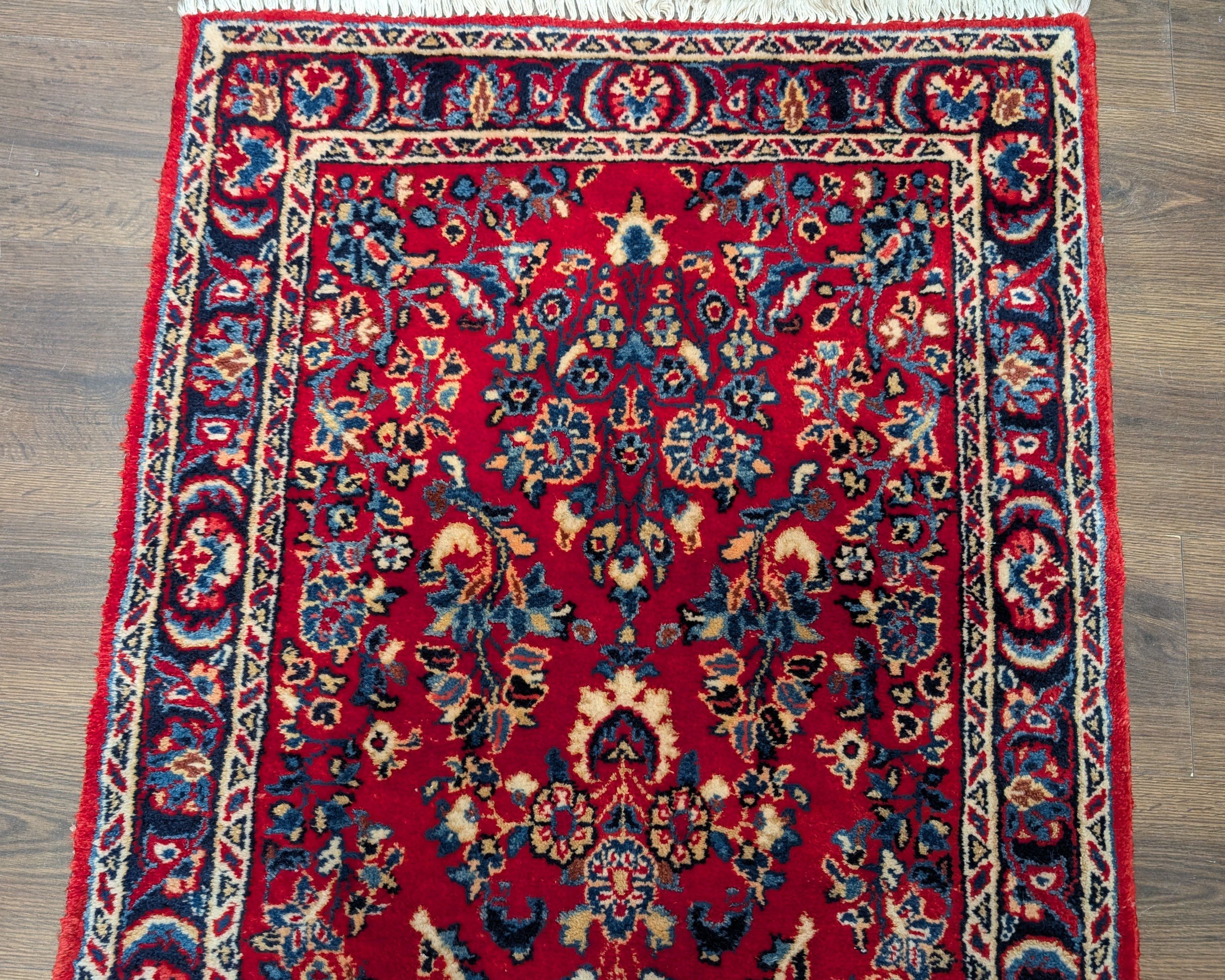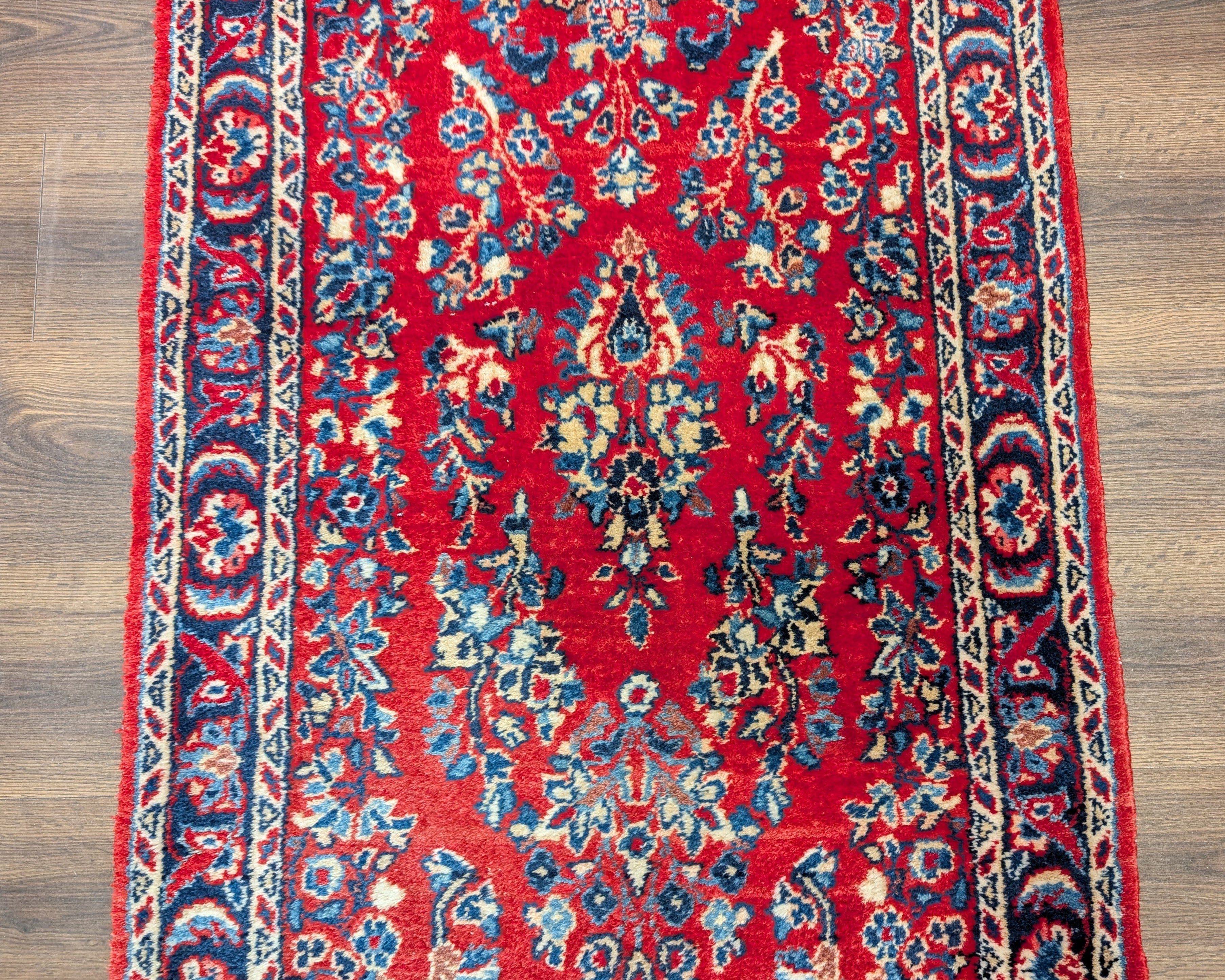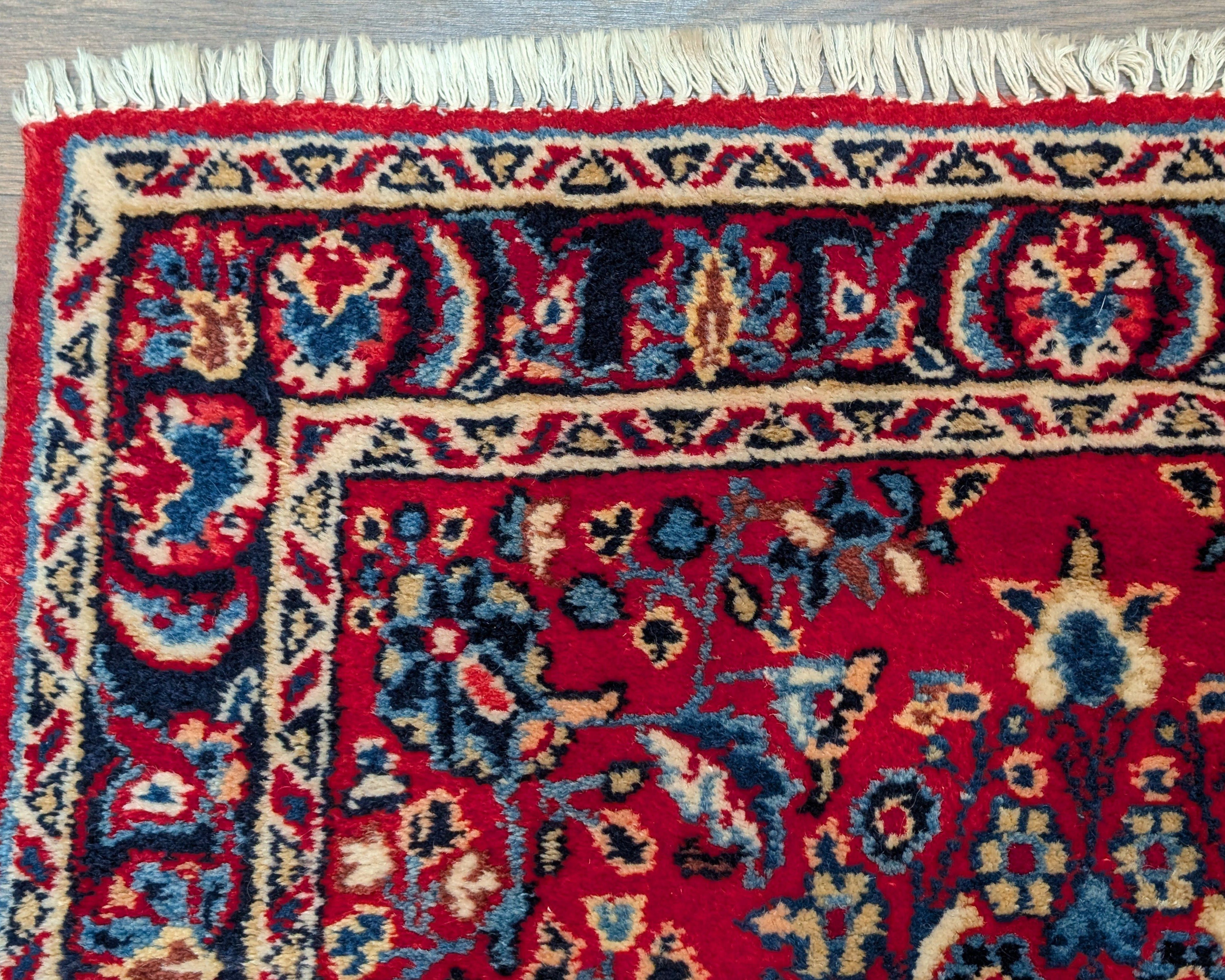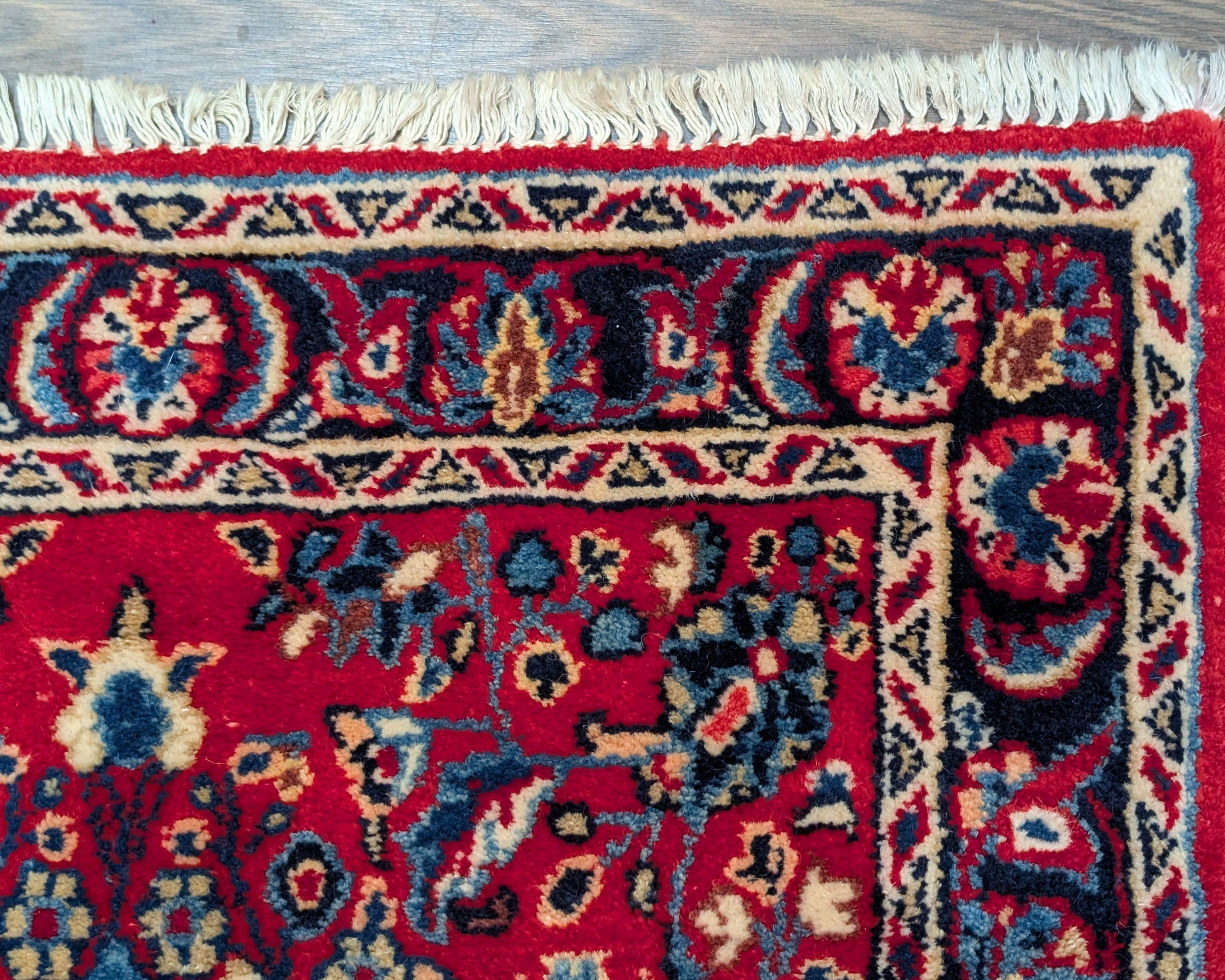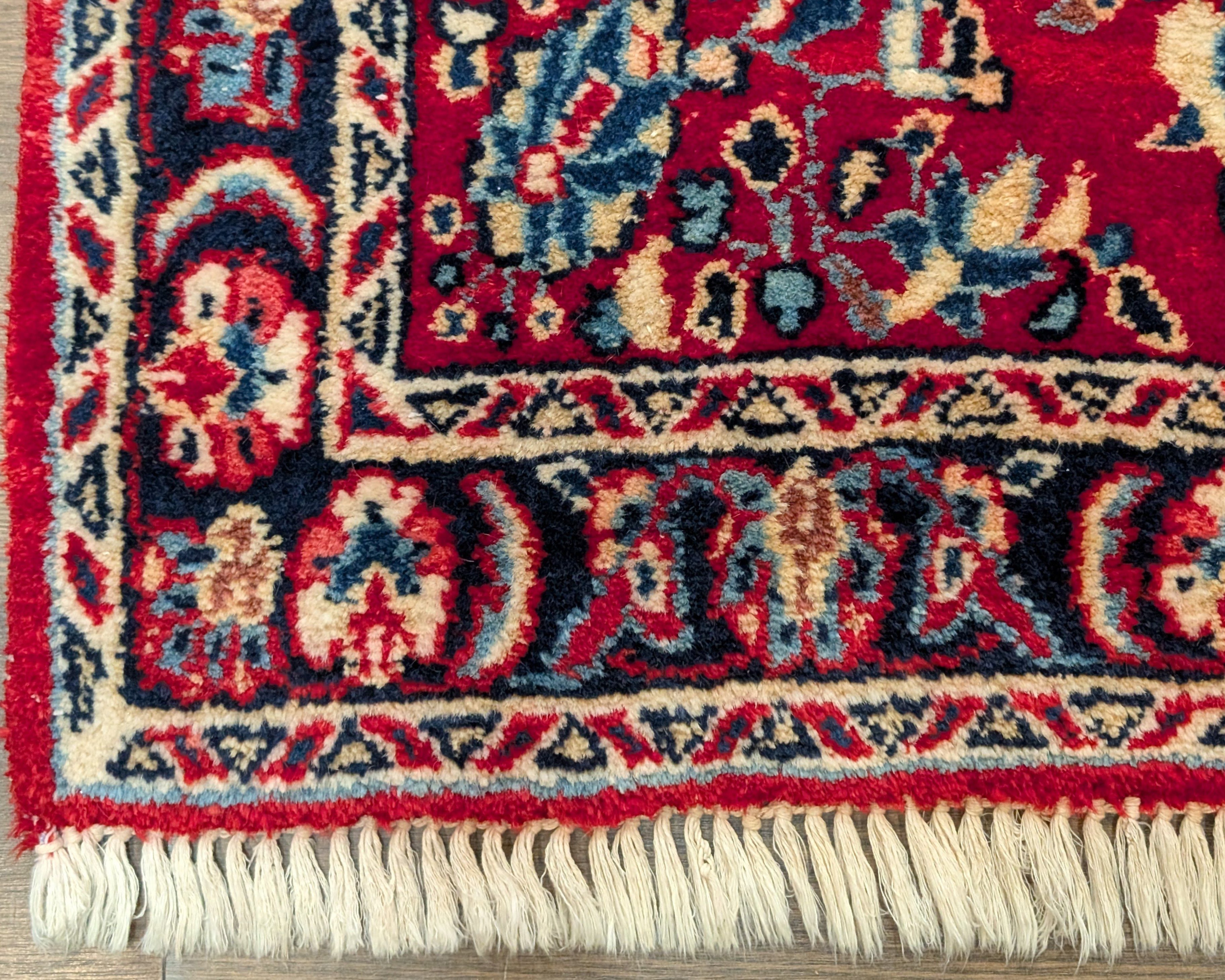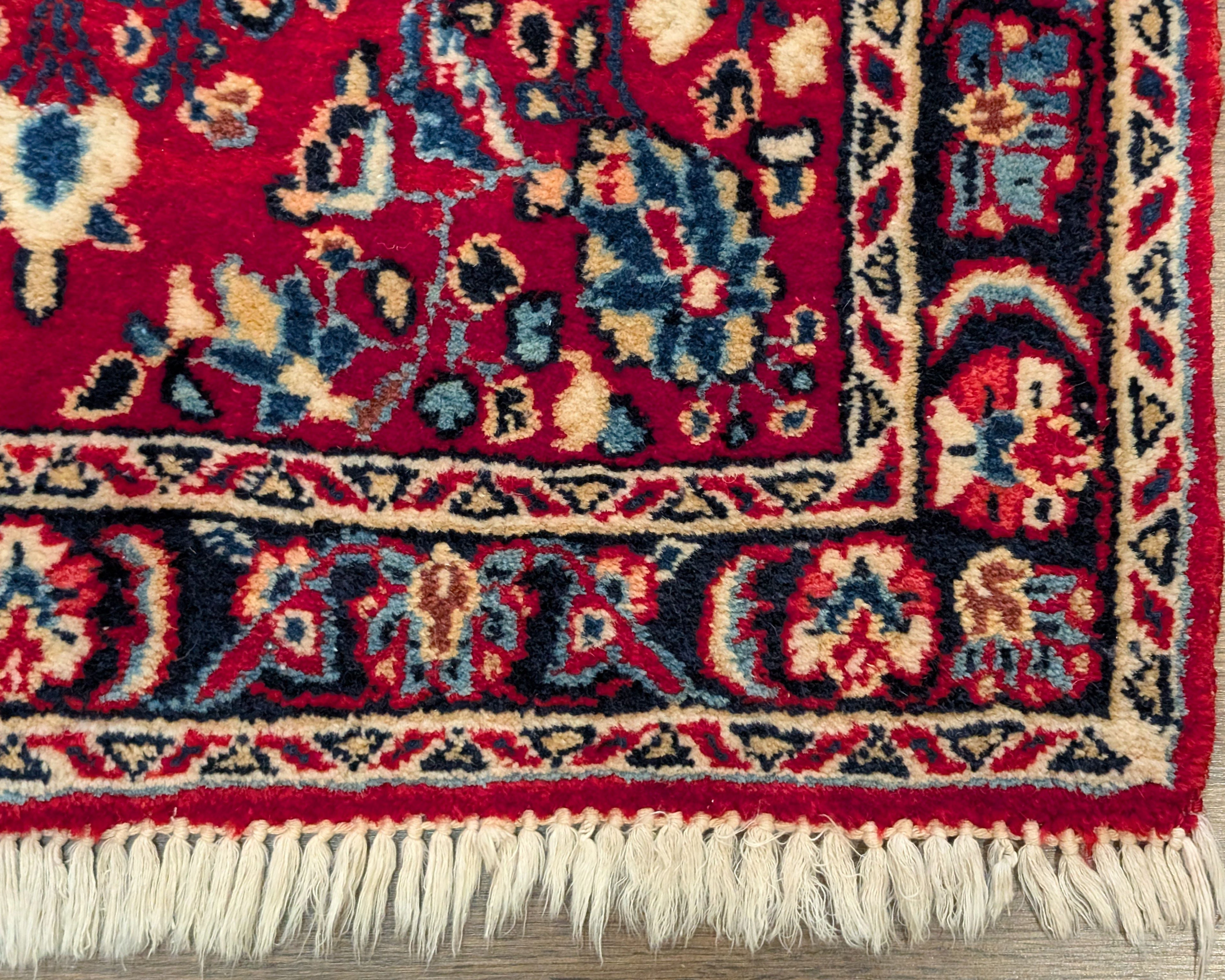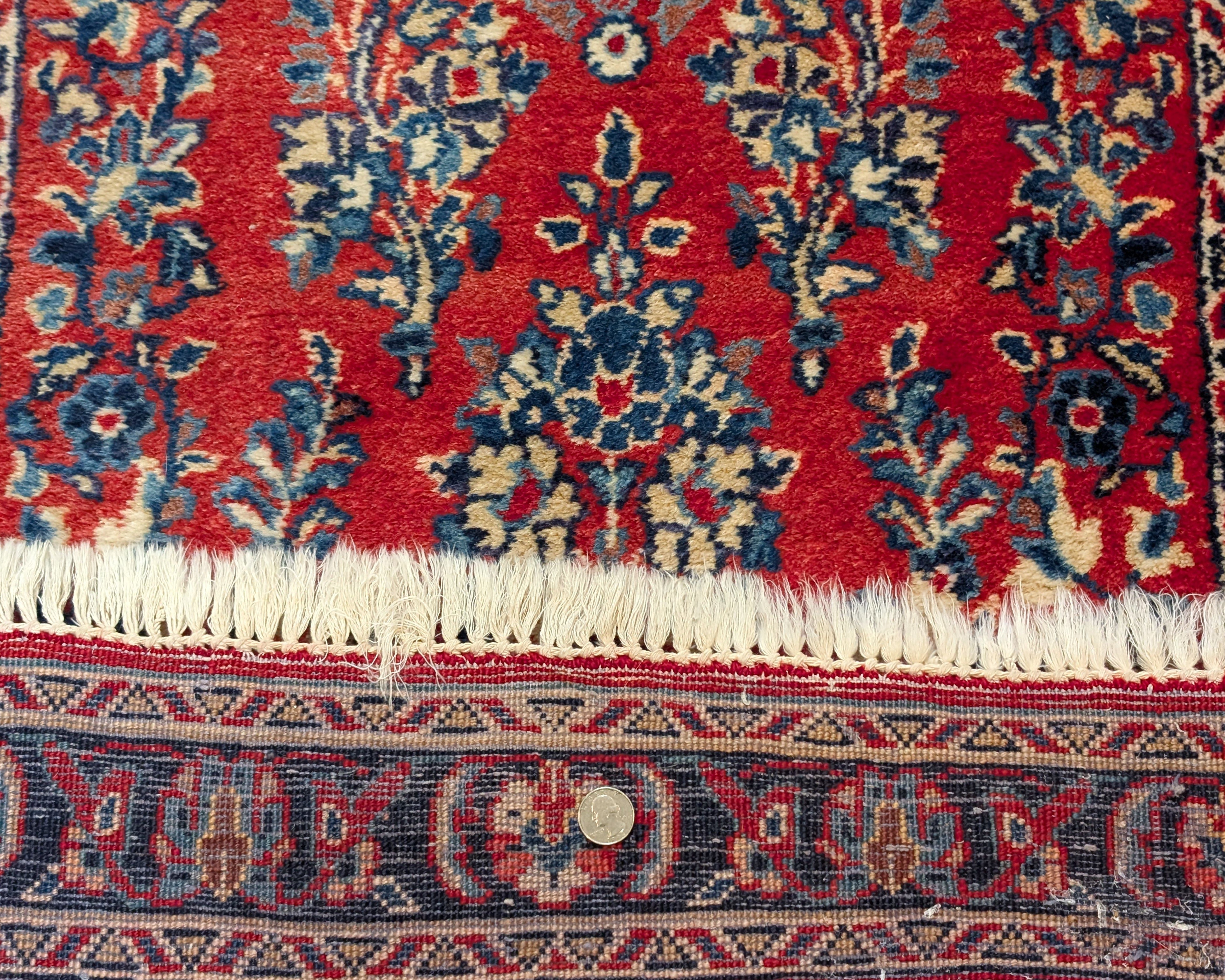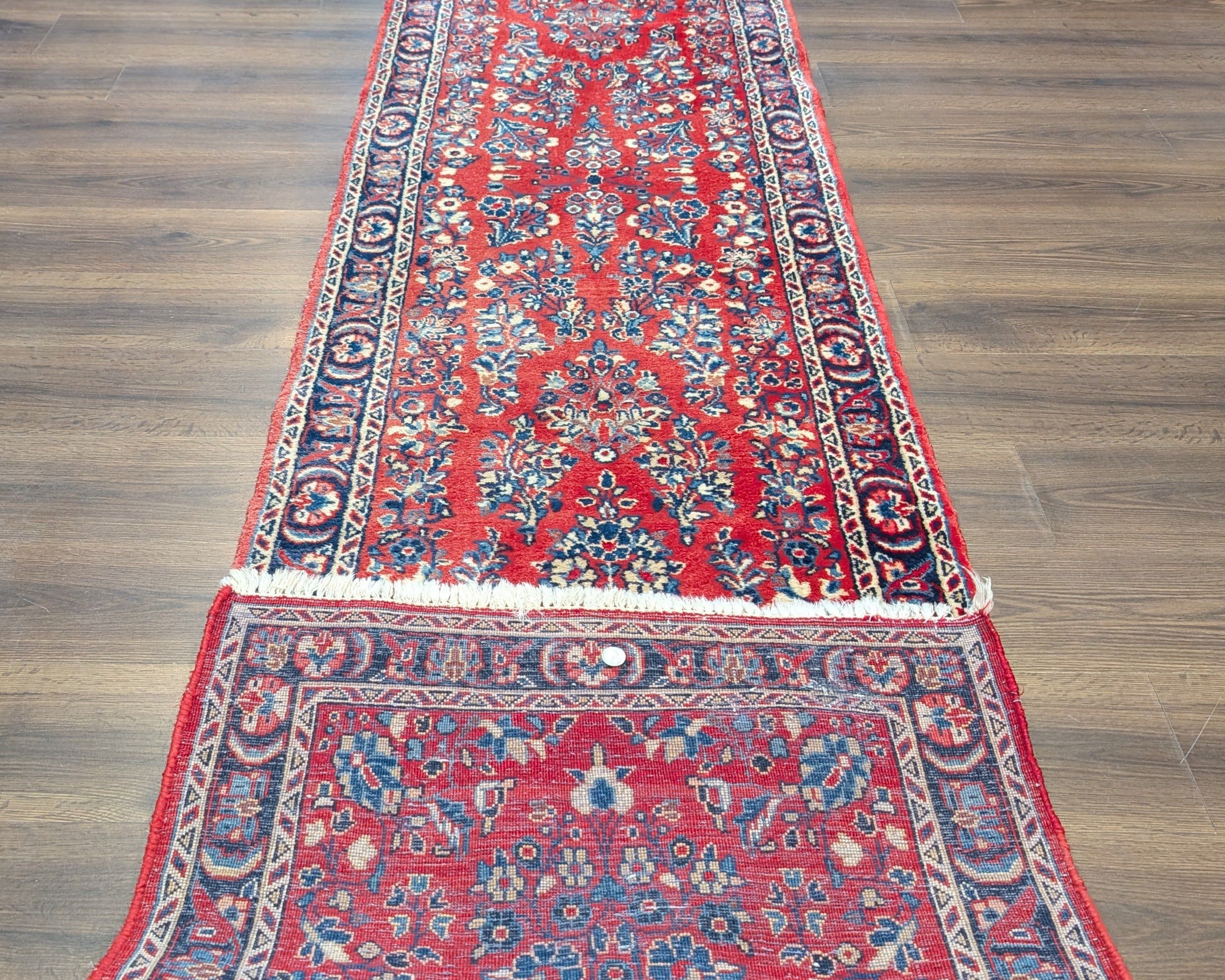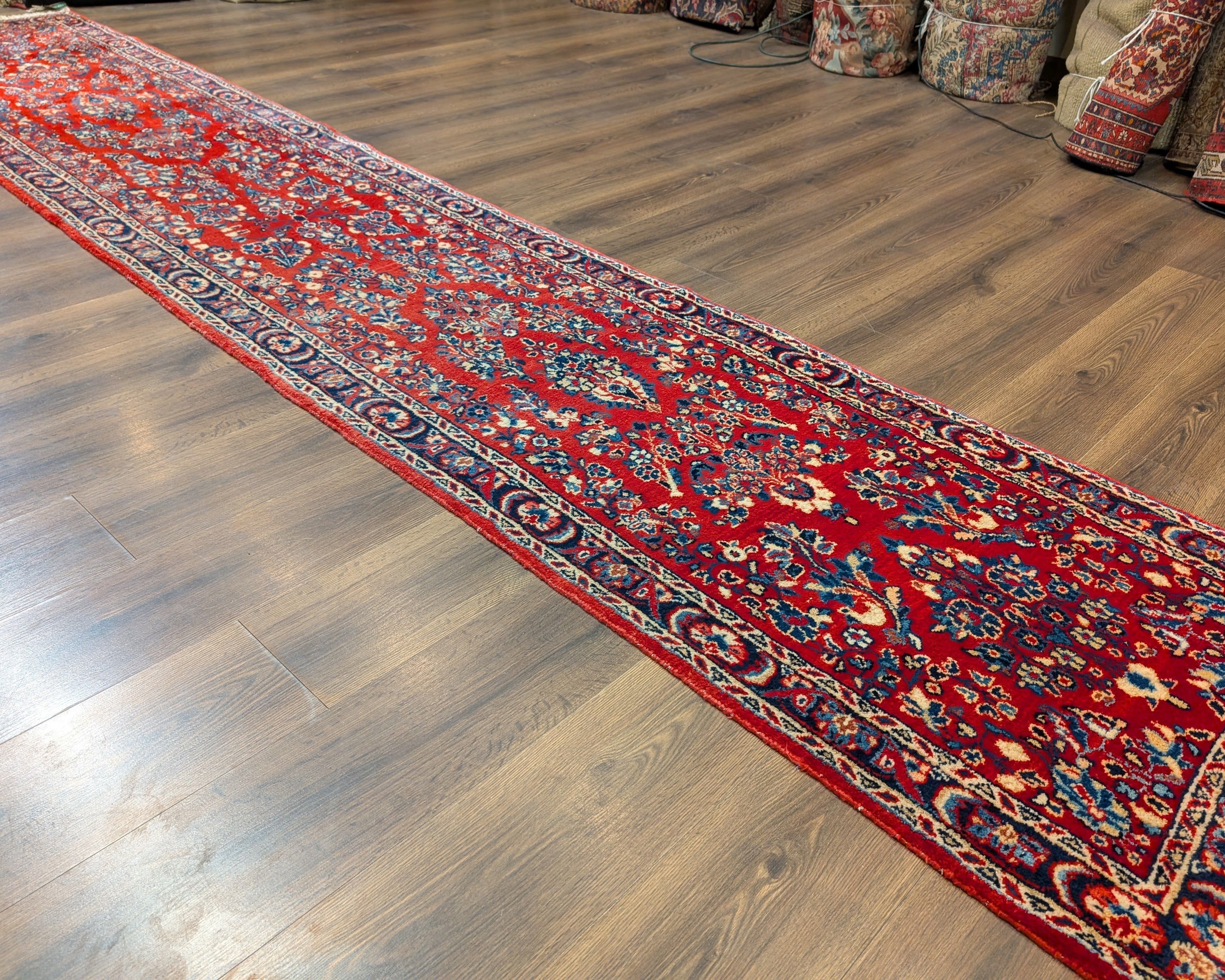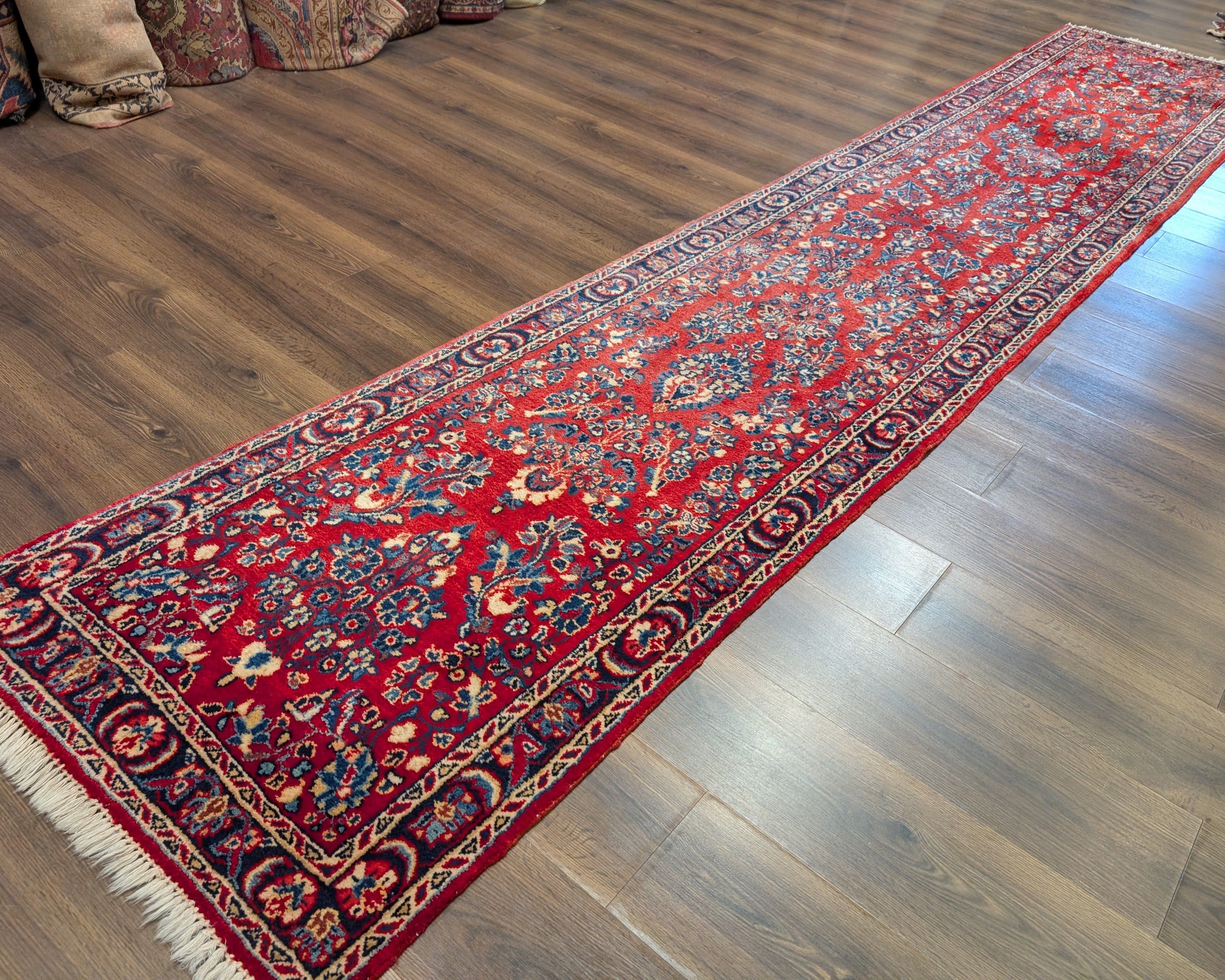History of Sarouk Rugs
Sarouk rugs have been woven for over a century, originating from the village of Sarouk and surrounding areas in Iran’s Arak province. By the late 19th century, these rugs had gained widespread recognition for their superior wool quality and intricate floral designs, making them highly sought after in both Persian and Western markets.
Unlike many Persian carpets that feature central medallions, Sarouk rugs are distinguished by their all-over floral sprays or symmetrical patterns, often set against deep red, navy blue, or ivory backgrounds. Their high knot density and thick pile contribute to their reputation for durability, making them an ideal choice for high-traffic areas.
During the early 20th century, Sarouk rugs became particularly popular in the United States, leading to the creation of the American Sarouk, a variation designed specifically for Western buyers. Some of these rugs underwent a post-weaving dyeing process, which became known as Painted Sarouks, adding to their unique history.
What Makes Sarouk Rugs Unique?
1. Superior Wool Quality & Durability
Sarouk rugs are woven with high-quality Persian wool, known for its soft yet resilient texture. The wool used in Sarouk rugs often results in a velvety, lustrous pile, adding a subtle sheen to the surface that enhances the depth of their intricate patterns. Their dense pile makes them highly resistant to wear, ensuring they maintain their beauty for generations.
2. Signature Floral Designs
Unlike medallion-based Persian rugs, Sarouks are defined by their elegant floral arrangements, which often include:
- All-over floral sprays, creating a balanced and harmonious look.
- Framed floral borders, often featuring arabesque motifs that complement the field design.
3. Rich & Versatile Color Palettes
Sarouk rugs are traditionally found in deep reds, navy blues, ivories, and earth tones, though variations exist depending on the era and production style. While early Sarouks were woven with softer pastels, later versions, especially Painted Sarouks, often featured richer, more vibrant tones.
4. High Knot Density & Exceptional Craftsmanship
Sarouk rugs are meticulously hand-knotted, with Persian knotting techniques ensuring precision and longevity. Their high knot count (often exceeding 200 KPSI) results in detailed, crisp patterns that maintain their clarity even after decades of use.
Notable Variations of Sarouk Rugs
American Sarouk Rugs & Painted Sarouk Rugs
In the early 1900s, Persian Sarouk rugs were woven specifically for the American market. These rugs, known as American Sarouks, retained traditional Persian floral designs but were produced in sizes and colors that suited Western tastes. Many of these rugs were later re-dyed in the U.S., enhancing their deep red backgrounds—these modified pieces became known as Painted Sarouks.
Key Features:
- Designed for export to the United States.
- Some retained original rose red/pastel backgrounds, while others were chemically re-dyed in the U.S. for a bolder look.
- Characterized by dense floral sprays and a thick, durable wool pile.
Mohajeran Sarouk Rugs
Mohajeran Sarouks are considered the finest Sarouk rugs, woven in Mohajeran, a village near Arak. These rugs feature softer color palettes, intricate floral patterns, and superior Persian wool, making them more refined and highly valuable.
Key Features:
- Higher knot density and more detailed floral motifs.
- Muted colors such as soft rose, navy, and ivory.
- Crafted with silky, high-quality wool for a luxurious sheen.
Sarouk Farahan Rugs
Sarouk Farahan rugs are older, antique variations, woven in the 19th century in the Farahan region. These rugs are among the most finely woven Persian carpets, often featuring a mix of floral and geometric elements, and are considered highly collectible.
Key Features:
- Extremely fine weave with intricate details.
- Softer, aged color palettes, including blues, greens, and rust.
- Often feature a central medallion, distinguishing them from later Sarouks.
FAQs About Sarouk Rugs
1. How can you identify a Sarouk rug?
Sarouk rugs are known for their dense floral motifs, luxurious wool pile, and high knot density. Unlike many Persian rugs, they typically feature all-over floral designs rather than central medallions.
2. Where do Sarouk rugs come from?
Sarouk rugs originate from the Arak region of Iran, specifically from the village of Sarouk and surrounding weaving centers.
3. What is the meaning of Sarouk?
The name Sarouk comes from the village of Sarouk in Iran, where these rugs were traditionally woven. It represents a tradition of Persian craftsmanship and high-quality weaving.
4. What is an American Sarouk?
An American Sarouk is a Persian Sarouk rug woven specifically for the U.S. market. While some retained their original colors, others were re-dyed in the U.S. to create a deeper red background (these are known as painted sarouk rugs).
5. What is a Painted Sarouk rug?
A Painted Sarouk is an American Sarouk rug that underwent a post-weaving dye process in the U.S. to create a bold red field, making it more appealing to American buyers.
6. What is a Mohajeran Sarouk?
A Mohajeran Sarouk is a high-end variation of a Sarouk rug, known for finer knot density, more delicate floral patterns, and softer color palettes.
7. What is a Sarouk Farahan?
A Sarouk Farahan is an antique Persian rug woven in the 19th century in the Farahan region. These rugs are highly collectible due to their exquisite craftsmanship and refined designs.
8. How do you care for a Sarouk rug?
- Vacuum regularly but avoid the fringes.
- Rotate the rug periodically to ensure even wear.
- Keep out of direct sunlight to prevent fading.
- Professional cleaning is recommended every few years.
Why Choose a Sarouk Rug?
Sarouk rugs are among the most durable and elegant Persian carpets, offering a timeless aesthetic and unparalleled craftsmanship. Whether you’re looking for a classic Persian rug, an American Sarouk with its signature red hue, or an antique Sarouk Farahan, these rugs represent a perfect blend of tradition and sophistication.
